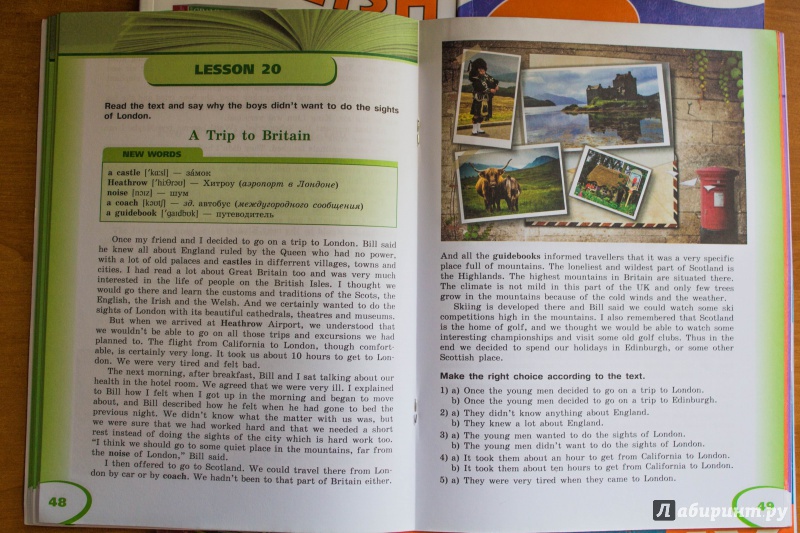Тексты для контроля навыков чтения, 6 класс
The London Underground and the Moscow metro
The London Underground is the oldest one in the world. In 1870 there was the opening of the first line. It was like a tube (Tpy6a), that’s why English people call the old lines the Tube, the new lines the Underground.
The London Underground is very long. It’s about 300 kilometers long and it has about 300 stations. Some of them are closed on Sundays. The other stations are closed on Saturdays and Sundays. The price of tickets isn’t low. It depends on the distance. There are comfortable seats in the carriages at the Underground. The walls are white or grey. There are a lot of ads on them.
So the word «Underground» in London shows you where the stations are. When you want to find the metro stations in Moscow you look for the letter «M».
The Moscow metro began its work on the 15th of May, 1935.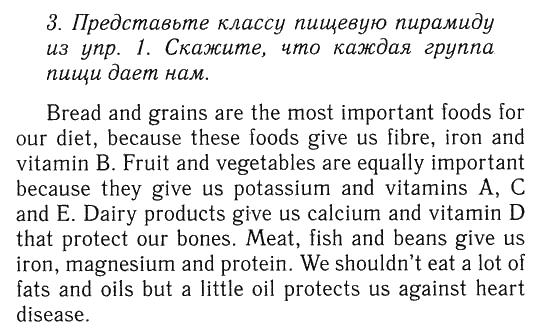
When was the first line of London underground opened?
How many stations does it have?
What is the price of tickets?
What colour are the walls?
What does the word «Underground» in London show you ?
A policeman
I began working on a response team. It is a difficult but interesting job to police a large city. Some of my colleagues have police dogs, some ride police horses, others ride police motorbikes. Most British police officers do not carry guns. But there are police officers, who have extra training and carry guns.
It is a difficult but interesting job to police a large city. Some of my colleagues have police dogs, some ride police horses, others ride police motorbikes. Most British police officers do not carry guns. But there are police officers, who have extra training and carry guns.
You need different skills to be a police officer. It’s necessary to be sociable and responsible. You must believe in the importance of law and order. In tragic situations you must be strong and compassionate.
A policeman is a dangerous job. Good policemen are ready to risk their own lives to help and protect people.
1. Who visited the school one day?
2. Why was I shocked in London?
3. What does help policemen to work?
4. What skills does a policeman need to be a police officer?
5. What are ready good policemen to?
How would you do it?
Once a farmer went to a market.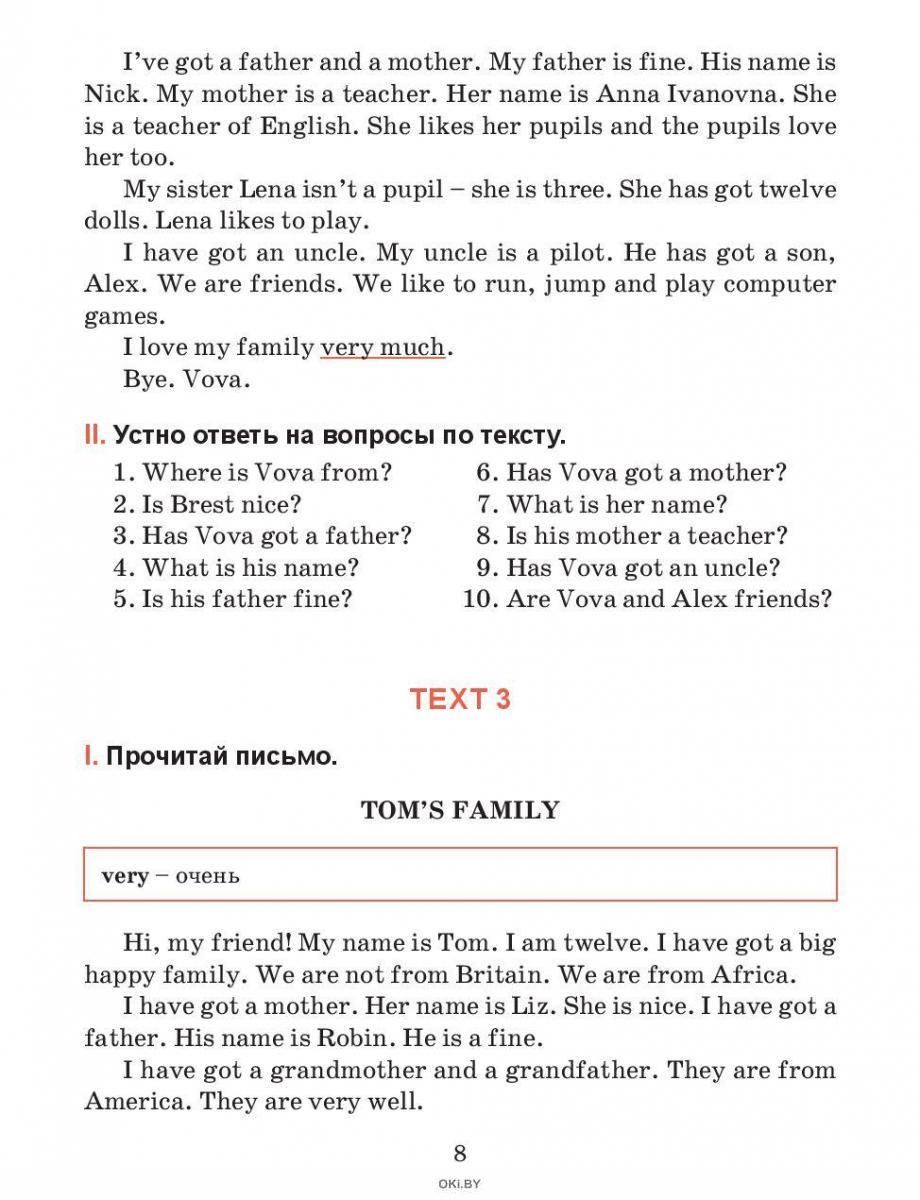 He took three animals with him: a hen, a sheep and a fox. He had to cross a river which was very wide. There was a boat but it was very small. He could not take all his animals with him. He could take only one animal at a time. So he had to cross the river three times. But he knew that he could not leave the fox with the sheep or with the hen because the fox could kill them.
He took three animals with him: a hen, a sheep and a fox. He had to cross a river which was very wide. There was a boat but it was very small. He could not take all his animals with him. He could take only one animal at a time. So he had to cross the river three times. But he knew that he could not leave the fox with the sheep or with the hen because the fox could kill them.
He did not know what to do and went back home. When he came home and told his father about it, his father laughed. «You can do it,» he said, «and I can tell you how.» The father said, «You must take the fox to the opposite bank first. Then you must come back and take the sheep to the opposite bank too. You cannot
Where did a farmer go?
How many animals did a farmer take with?
How many animals could he take in the boat at a time?
Why did he go back home?
What did his father say?
The wonderful world of books
Why are so many people fond of reading books? The answer is very simple — the world of books is full of wonders.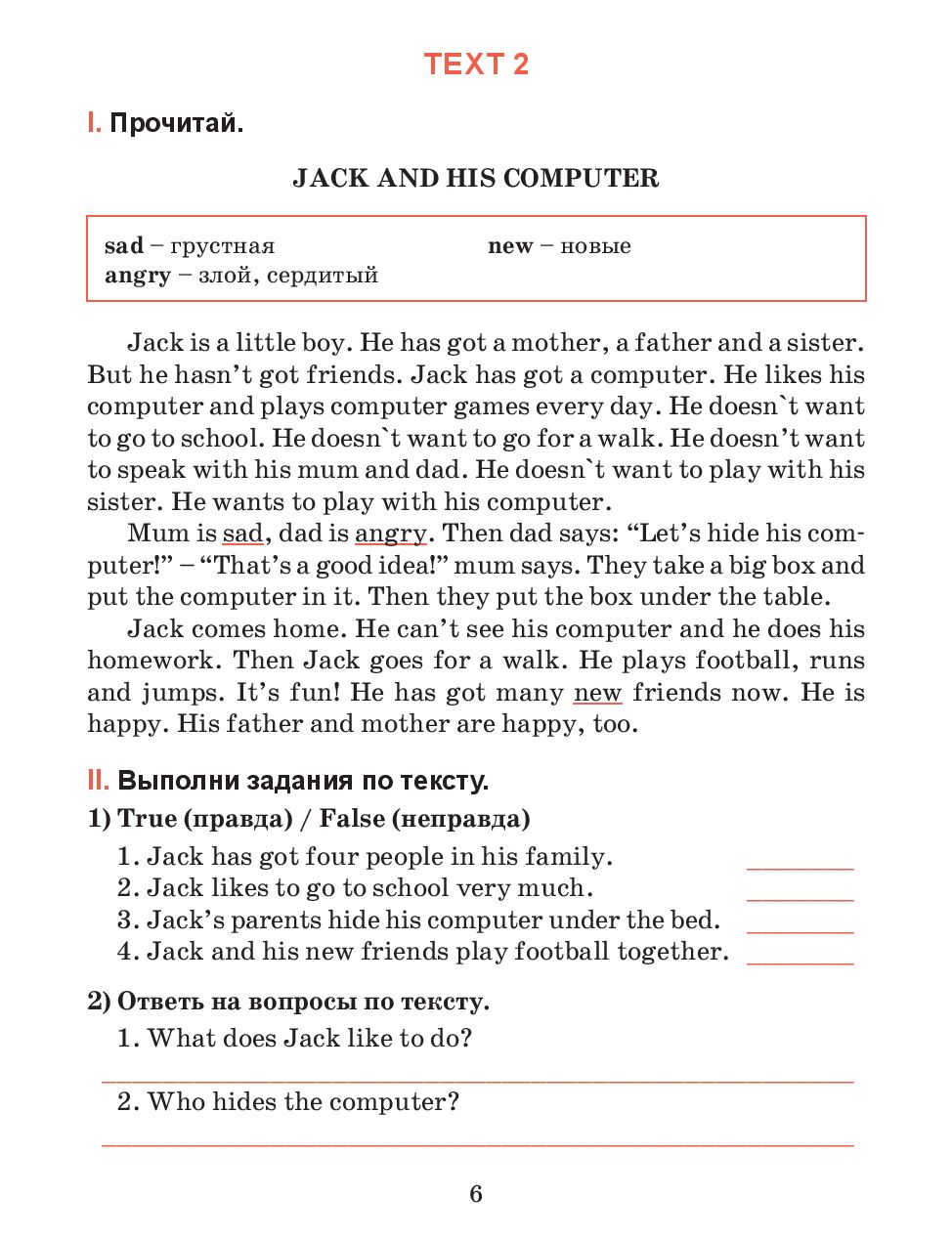 Reading books you can find yourself in different lands. Together with the characters of the book you go by ship in the stormy sea, you climb high mountains, you have a lot of adventures.
Reading books you can find yourself in different lands. Together with the characters of the book you go by ship in the stormy sea, you climb high mountains, you have a lot of adventures.
There are authors and characters famous all over the world. Who hasn’t read «Alice in Wonderland» by Lewis Carroll or «The Adventures of Tom Sawyer» by Mark Twain? Who hasn’t travelled with Mary Poppins to her imaginary world?
We enjoy the beauty and wisdom of fairy-tales which teach us to be kind and clever, brave and honest, to understand other people. Books help us to be true friends. They teach us to understand the beauty of nature, to take care of it.
Why are people fond of reading books?
What can you find reading books?
What can you do together with the characters of the book?
How do books help people?
What do they teach us?
So many people, so many hobbies
A hobby is something you like to do in your free time.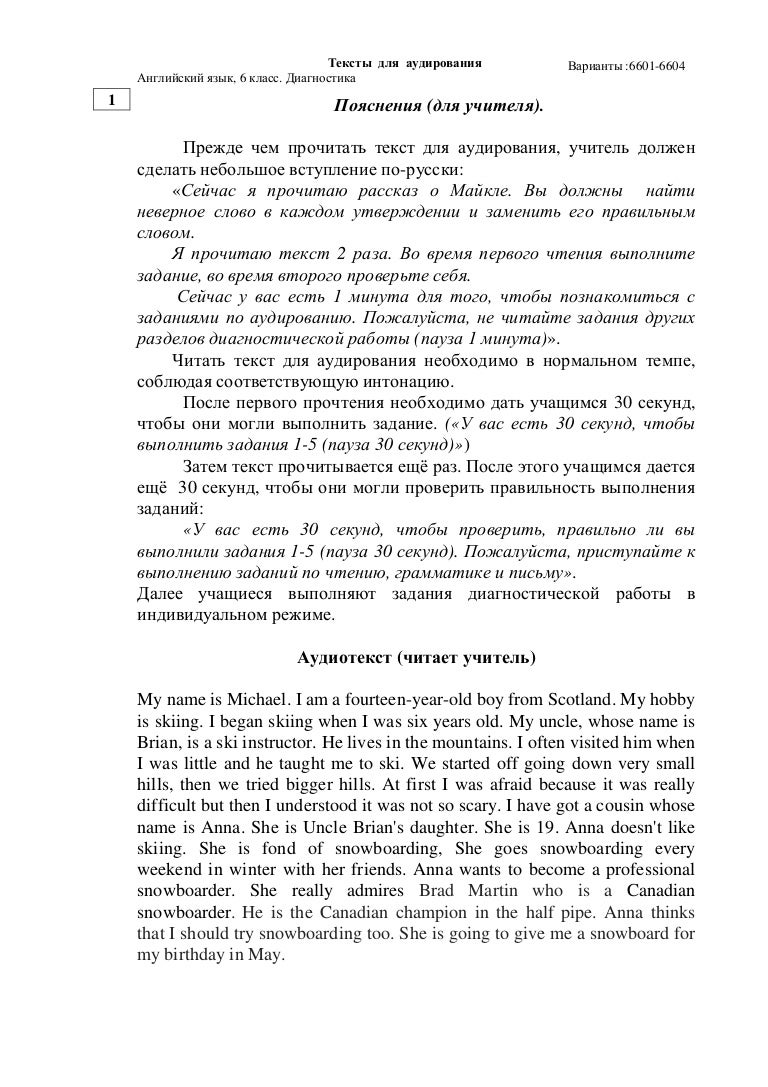
Nowadays many new hobbies have appeared.
Many people are fond of hunting, but not with the guns. They enjoy «hunting» sea animals and fish with a camera. Both grown-ups and children like playing computer games. It has become one of numerous hobbies. Very often hobbies help you to choose your future profession.
1. What is hobby?
2. What hobbies do you know?
3. What is the most popular hobby among Englishmen?
4. What new hobbies have appeared?
5.How can hobbies help you?
The old musician
It happened in Vienna many years ago. Every evening an old man played the violin in one of the streets. People passed by and put some money into the man’s hat.
Every evening an old man played the violin in one of the streets. People passed by and put some money into the man’s hat.
One night it was very cold and rainy. The old musician was playing the violin near the door of a restaurant, but the people didn’t stop to listen to him. Nobody gave him any money. He was very tired and hungry and couldn’t play any longer.
Suddenly a young man came up to him and asked, «Why did you stop playing?» The old man answered, «Nobody wants to listen to my music.»
The young man took his violin and began playing. He played so beautifully that very soon there were a lot of people around him. Everybody liked the music and put a lot of money into the old man’s hat.
Nobody knew that he was the great Paganini.
What musical instrument did an old man play?
Where did people put money?
Why couldn’t the old man play any longer?
How did the young man help the old musician?
What was the name of the young musician?
A modern kitchen
A cook, who wanted to get a job, came to speak to Mrs.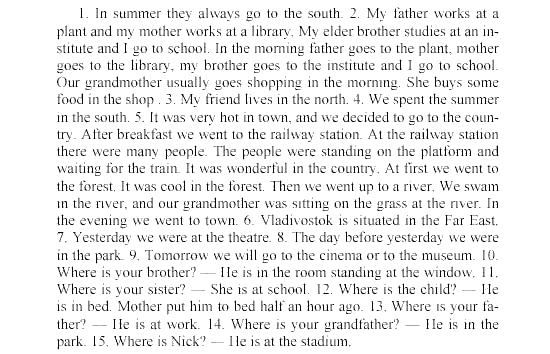 White. She asked her what dishes they liked to have and Mrs. White said they had three meals a day and liked to have ham and eggs for breakfast, vegetable soup and beefsteak for lunch, chicken or fish for dinner.
White. She asked her what dishes they liked to have and Mrs. White said they had three meals a day and liked to have ham and eggs for breakfast, vegetable soup and beefsteak for lunch, chicken or fish for dinner.
Then Mrs. White took the cook to the kitchen and showed her the electric cooker, the washing and drying machines, a dish-washer, a microwave and other things.
«It won’t be difficult for you to cook in our house,» she said. «I don’t think so,» answered the cook and began to put on her coat. She was going to leave the house when Mrs. White asked in surprise, «Aren’t you going to stay?»
«No,» said the cook, «your kitchen isn’t good for me. It’s an engineer you want, not a cook.»
Why did a cook come to speak to Mrs. White?
What dishes did they like to have?
What was there in the kitchen?
Did the cook like the kitchen?
Why was Mrs.
 White surprised?
White surprised?
Shopping hours in Britain
Shopping hours in Britain are changing. A few years ago, shops opened at nine o’clock in the morning and closed at six o’clock in the evening. Some shops also closed for an hour for lunch. On Sundays nothing was open.
But now many shops are open longer hours. Some big shops and many supermarkets never close! If you want some milk or some bread at midnight, you can easily buy it.
It’s very good for people who often work late at night or early in the morning. If someone finishes work at five o’clock in the morning, they can go to the supermarket on their way home and buy some breakfast or a newspaper or anything else they want.
There are people who don’t think it’s good. They say that Sunday is a holiday for all people — who wants to work in a supermarket on a Sunday? But shops are very busy at the weekend and they will work to make people’s life easier.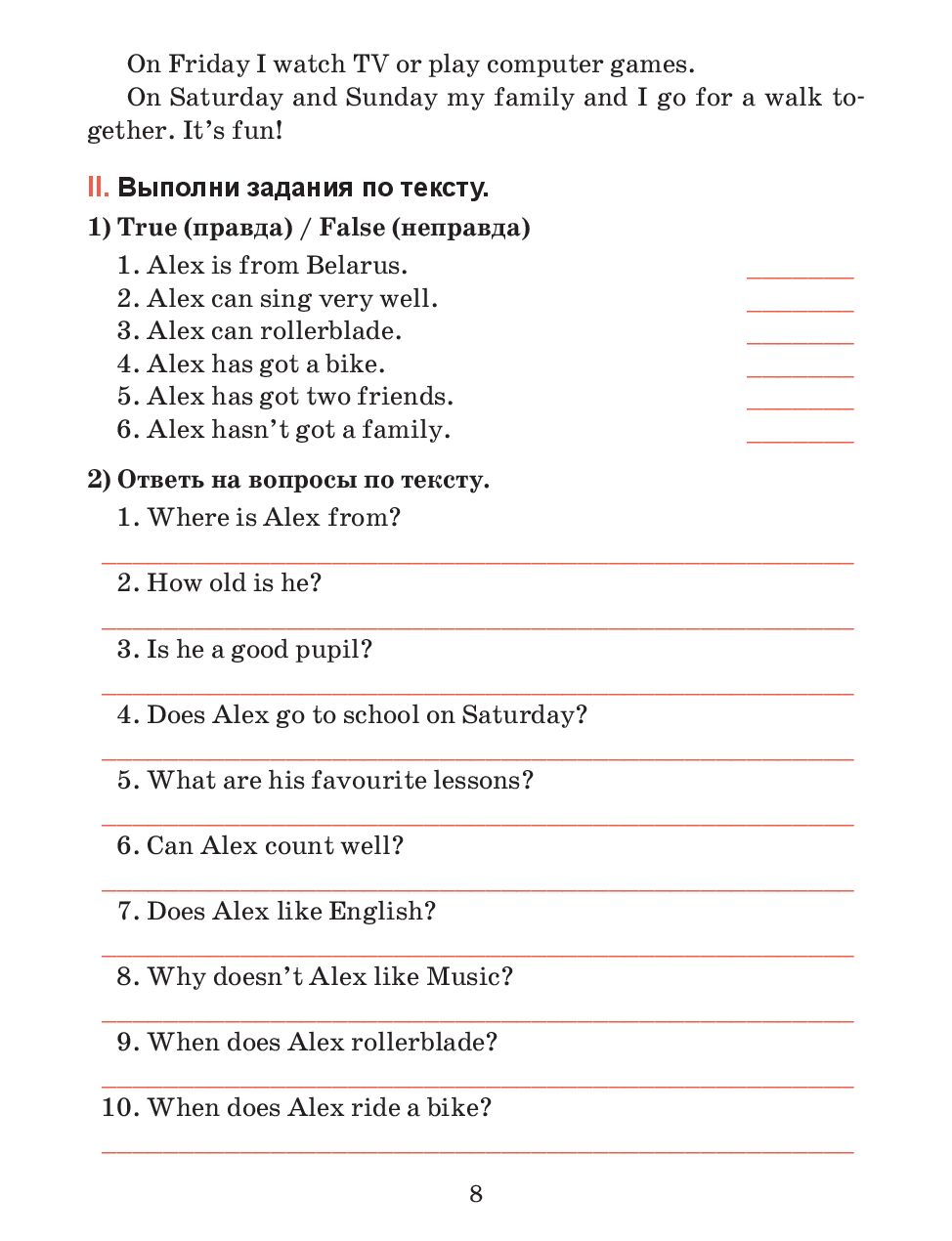
What is changing in Britain?
How did shops work in the past?
Can you buy any milk or any bread at midnight?
Who wants to work in a supermarket on a Sunday?
What can you buy in the supermarket?
It’s your duty!
It is two o’clock at night. A young doctor is sleeping. Suddenly he hears the door-bell ring. What can a doctor do? It’s his duty to help his patients even at night. When he opens the door, he sees a man standing there.
«How do you do, Doctor?» says the man. «Can you go to a place in the country? It’s not near, but I know you have a car. I can show you the way.» «Of course,» says the doctor. «I am ready. I can go with you now.»
The doctor goes to his garage and takes his car.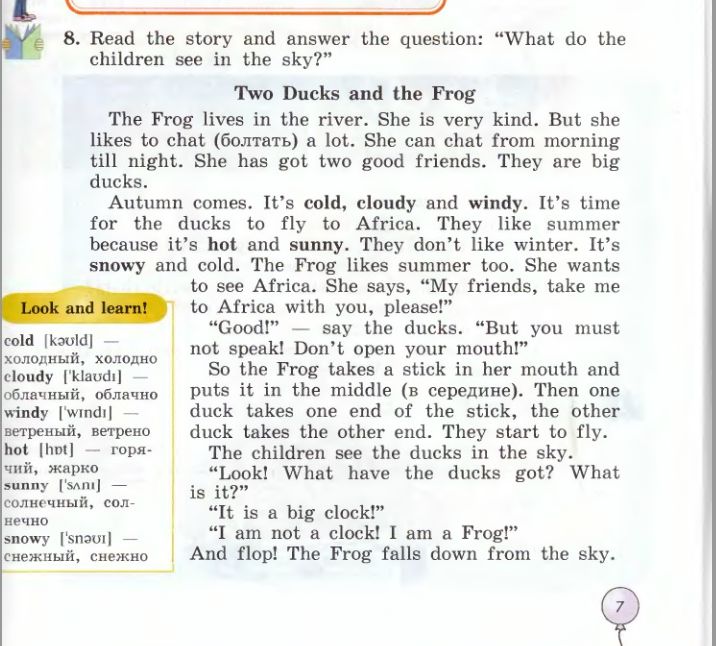 In five minutes the car is standing in front of the house and the doctor and the man start off. They drive for some time. They must be ten or fifteen kilometers from the city when the man says, «Here we are. This is my home. Thank you very much. Now I want to pay you and you can go back home.»
In five minutes the car is standing in front of the house and the doctor and the man start off. They drive for some time. They must be ten or fifteen kilometers from the city when the man says, «Here we are. This is my home. Thank you very much. Now I want to pay you and you can go back home.»
«But how can I go back? I must see the patient. Where is he?
«There is no patient,» says the man. «Nobody is ill. I live here far from the city and must get home. There are no taxis at this time of the night. But it’s a duty of a doctor to help his patients even at night. So, excuse me. Here is your money. Thank you. Good night.»
What time it is?
What is a young doctor doing at this time?
What is the duty of the doctor?
How many kilometers from the city did the doctor drive?
Was there any patient in the house?
Welcome to the supermarket
Good afternoon! Welcome to our supermarket. Listen to the information about some special things happening in the shop today.
Listen to the information about some special things happening in the shop today.
First — if you buy eggs here today, you will get a free book which will tell you how to make beautiful cakes and biscuits. You can find the eggs at the back of the shop near the fruit juices.
Next, something at a very special price. We have some very good chocolate which you can buy today much cheaper than usual. You can find it near milk and yoghurt.
Also, why not stay and have a lunch in our cafe. There you can find chicken, cheese and fish sandwiches or maybe you would like to try our soup. Every day we have a different kind of soup and today it is tomato. Welcome to our cafe upstairs. Finally, you can win a TV set if you take part in our competition today. Just write your name and telephone number on a special card and put it in the box when you leave the shop.
Thank you for visiting our supermarket.
What special things are happening in the shop today?
Where can you find the eggs?
What is special about chocolate?
What dishes can you eat in the café?
What prize can you win in the competition?
Chocolate
We all like chocolate.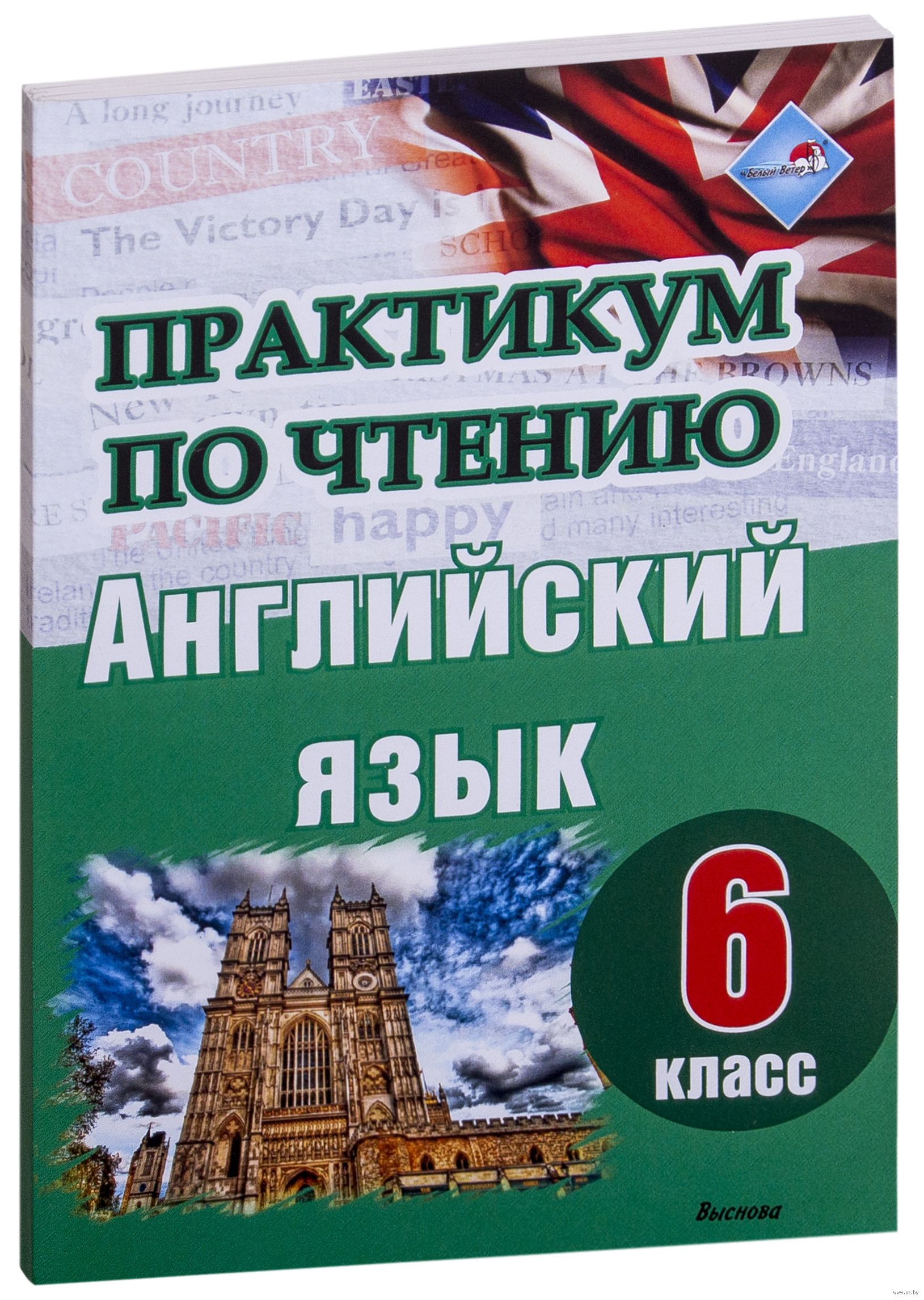 In fact, the Kit Kat chocolate bar is so popular that the British eat forty seven of them every second! But what exactly is chocolate and where does it come from? And is it good for us or bad for us?
In fact, the Kit Kat chocolate bar is so popular that the British eat forty seven of them every second! But what exactly is chocolate and where does it come from? And is it good for us or bad for us?
Perhaps you know the history of chocolate. Like the potato, it comes from South America. The Spanish people brought it to Europe as a drink. It was so expensive that only rich people could buy it. The idea of making it into bars came later so it became popular as a sweet only in the 1850s.
Why do we like chocolate so much? Of course, it tastes good, but there are other reasons. There is something in chocolate which makes us happy. And it gives us a lot of energy. But it’s also so rich in calories that you can put on weight if you eat it all the time.
Is it good or bad for us? Well, some scientists say that chocolate is very healthy, that it isn’t bad for your heart or your skin and that’s it even good for your teeth. Other people think that you shouldn’t eat it at all.
The truth is somewhere in the middle. You shouldn’t eat chocolate all the time but it’s too tasty to say no!
What chocolate is the most popular in the UK?
Where does chocolate come from?
Why only rich people could buy chocolate?
What does chocolate give us?
What do some scientists say about chocolate?
A new job
Twelve months ago Robin Tucker left his job as a salesman. Now he has a restaurant.
Robin lived ill London and had a job there. But he decided it would be difficult to open a restaurant in such a big city. So he chose Brighton, because he knew it from the years of his childhood.
Robin found an empty building in a nice old street. The house was very old, but other buildings were expensive and he didn’t have much money.
Robin loves his new work.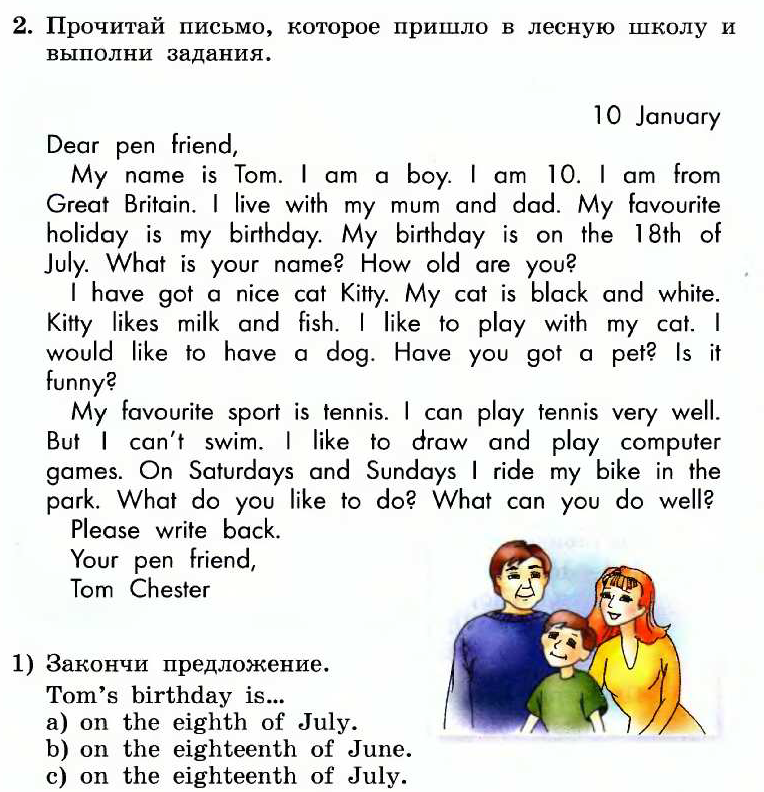 He has found a good cook. Robin himself gets up at 6 am and often goes to bed after midnight. He enjoys talking to people who come to his restaurant and some of them have become his good friends.
He has found a good cook. Robin himself gets up at 6 am and often goes to bed after midnight. He enjoys talking to people who come to his restaurant and some of them have become his good friends.
Robin’s restaurant is going very well and he could take a long journey. But he doesn’t want to do it. Now he has a new idea to open a supermarket selling food from around the world.
When did Robin Tucker leave his job as a salesman?
Where did he live?
Why did he choose Brighton?
When does Robin get up?
What is his new idea?
The Queen’s day
It’s really a busy job to be Queen. Elizabeth II, the Queen of England, gets up early and begins the day by looking through the newspapers. Then she reads letters from the public (she gets more than 1,000 each week), and tries to answer them all. The Queen has daily meetings with her Private Secretary who helps her with her paperwork, and lots of meetings with ambassadors, lawyers (new judges), and church people.
The Queen has daily meetings with her Private Secretary who helps her with her paperwork, and lots of meetings with ambassadors, lawyers (new judges), and church people.
In the afternoon Elizabeth II often goes out on public meetings — she gets thousands of invitations each year. She opens new hospitals, bridges and factories.
Being Queen is not a 9 to 5 job, and Elizabeth II has to work from early in the morning until late at night. And people watch her all the time.
Of course, she has some free time, and some private life, but less than most people.
In her free time Elizabeth II enjoys horse racing, fishing, and walking in the countryside. She also enjoys photography and likes taking photos on her travels. In 50 years the Queen has been on 251 official visits to 128 different countries.
What is the name of the British Queen?
How does she begin her day?
How many letters does the Queen get every day?
What does she do in the afternoon?
How many official visits did the Queen pay?
The most famous woman pilot
Amy Johnson was a very famous pilot. She was born on 1st July 1903. In 1930 Amy flew from London to Australia. She went there alone. She flew in a small airplane called Jason. The journey took 19 days. She stopped many times at small airfields in Europe and Asia and on islands in the Pacific Ocean.
She was born on 1st July 1903. In 1930 Amy flew from London to Australia. She went there alone. She flew in a small airplane called Jason. The journey took 19 days. She stopped many times at small airfields in Europe and Asia and on islands in the Pacific Ocean.
She was a national hero when she came back to Britain and a newspaper gave her ten thousand pounds as a prize.
Amy made many other flights. In 1931 she flew to Japan and Siberia and in 1936 she had a flight from London to Cape Town in South Africa.
She made some of the flights alone and some with another famous pilot called Jim Mollison. In August 1932 Amy married Jim arid in 1933 they flew from Britain to the United States of America. She was the first woman to fly across the Atlantic Ocean from east to west. Amy died in a plane accident 9 in January 1941.
When was Amy Johnson born?
What was the name of her airplane?
How many days did her first journey take?
How did Amy become a national hero?
When did she die?
Safari parks
A safari park is like a large zoo, where the animals live in natural conditions . There are several safari parks, in Britain and they are very popular places for visit. One of the most famous is at Windsor, which is close to London airport.
There are several safari parks, in Britain and they are very popular places for visit. One of the most famous is at Windsor, which is close to London airport.
You can visit some parts of the safari park on foot. Here you can see the animals that are not dangerous: giraffes, zebras, camels and antelopes. The animals walk around as if they were in Africa.
Safari parks also have lions, tigers, leopards and other dangerous animals. They cannot live with the other animals, because they would eat them. They would also eat the visitors, so they have to drive through the parts where these animals live. You must not open your windows and you must not get out of the car. It is not a good idea to take a new car into this part of the park, because the monkeys climb on the cars. They can break or spoil them. Safari parks are much better than zoos, because the animals do not have to live in small cages.
Where do animals live in natural conditions?
How can you visit some parts of the safari park with non-dangerous animals?
Why such animals as lions, tigers, leopards cannot live with giraffes, zebras, camels and antelope?
Why must you close your windows and sit in the car in some parts of the safari park?
Why is it not a good idea to take a new car into safari park?
An evening out for the Americans
What do Americans do when they have a free evening? Where do they go?
It is easy if they live in New York or Chicago, for example. There are a lot of theatres and places to go in big cities. But people don’t have to live in New York to enjoy themselves. Many of the theatres travel from town to town. And in some «dinner theatres» you can have dinner and then watch the show.
There are a lot of theatres and places to go in big cities. But people don’t have to live in New York to enjoy themselves. Many of the theatres travel from town to town. And in some «dinner theatres» you can have dinner and then watch the show.
The cheapest way to enjoy yourself is to go to the cinema. Even in small towns in the USA you can go there and see the latest film.
Many Americans like to go and listen to music. Many forms of music have come from America to other countries. Jazz and blues started from the music that black people played many years ago. The style of country music is also very popular in America, especially in small towns. And some people spend an evening listening .to music and dancing.
Americans are fond of all kinds of sports. Even if they don’t play sports themselves they go to the stadiums to see games or watch them on TV.
What does «dinner theatres» mean?
What is the cheapest way to enjoy yourself?
What can you say about jazz and blues?
What sort of music is also popular in America?
Why Americans go to the stadiums?
An Unlucky Cat
Once there lived a cat.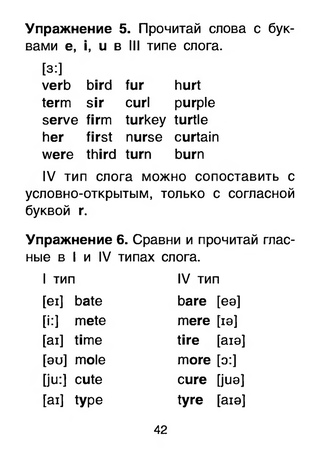 He was fat and lazy. He liked to sit at the window and look at the street. He had got big yellow eyes and long moustache. His name was Tiger. He was my friend’s pet. One day Tiger jumped over the wall and went into the garden next door. The weather was fine.
He was fat and lazy. He liked to sit at the window and look at the street. He had got big yellow eyes and long moustache. His name was Tiger. He was my friend’s pet. One day Tiger jumped over the wall and went into the garden next door. The weather was fine.
He saw a bird in an apple tree. It was a small brown bird with bright red feathers on its chest. Tiger was hungry. He
climbed the tree. The bird did not see him, because its eyes were closed.
The bird was at the end of a long, thin branch. It sang pretty. Tiger walked slowly and quietly longed the branch. He was very near the bird. Suddenly there was a loud crash!
The branch broke, the bird flew away and Tiger fell. He landed in the lap of an old lady who was sitting under the tree.
1. What is the name of the cat?
2. Who is Tiger?
3. What did he see in an apple tree?
4. What colour is the bird?
5. Why did Tiger fall?
Schools in the Past
One hundred years ago schools were very different.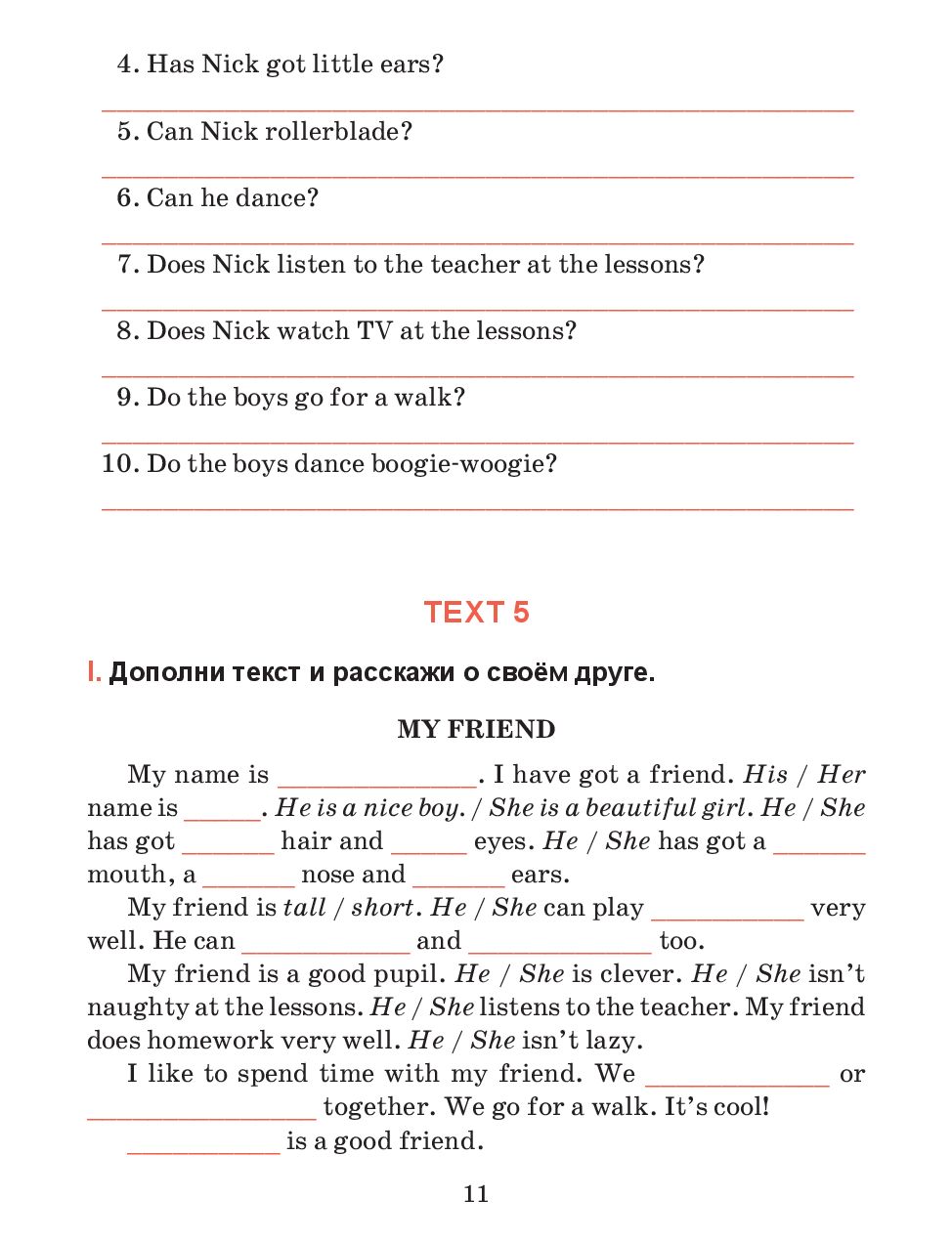 Children did not wear uniforms. They used to wear their everyday clothes to school.
Children did not wear uniforms. They used to wear their everyday clothes to school.
Children learned to read, write and do mathematics. They had history and geography lessons but they did not learn science. They used to write on slates with white chalk. When the children finished their work, they cleaned their slates with a rag so that they could write on them again and again. When they were older, children learned to write with pens and ink. They did not have many books because they were very expensive. Teachers were usually very strict. If the children were naughty they had to stand in the corner.
They did exercises in the playground. They did not do sports like basketball or football.
What clothes used children to wear in the past?
What school subject did children learn?
How did children write at school 100 years ago?
When did pupils learn to write with pens?
How many books did they have?
The Man with Thirteen Jobs
Andrew McSporran is a very busy man. He is 60 years old and he has thirteen jobs. He is a postman, a policeman, a fireman, a taxi driver, a school-bus driver, a boatman, an ambulance man, an accountant, a petrol attendant, a barman and an undertaker. Also, he and his wife, Margaret, have a shop and a small hotel.
He is 60 years old and he has thirteen jobs. He is a postman, a policeman, a fireman, a taxi driver, a school-bus driver, a boatman, an ambulance man, an accountant, a petrol attendant, a barman and an undertaker. Also, he and his wife, Margaret, have a shop and a small hotel.
Andrew lives and works on the island of Gigha in the west of Scotland. Only 120 people live in Gigha but in summer 150 tourists come by boat every day.
Every weekday Andrew gets up at 6.00 and makes breakfast for the hotel guests. At 8.00 he drives the island’s children to school. At 9.00 he collects the post from the boat and delivers it to all the houses on the island. He also delivers the beer to the island’s only pub. Then he helps Margaret in the shop.
He says: «Margaret likes being busy, too. We never have holidays and we don’t like watching television. In the evenings Margaret makes supper and I do the accounts. At 10.00 we have a glass of wine and then we go to bed.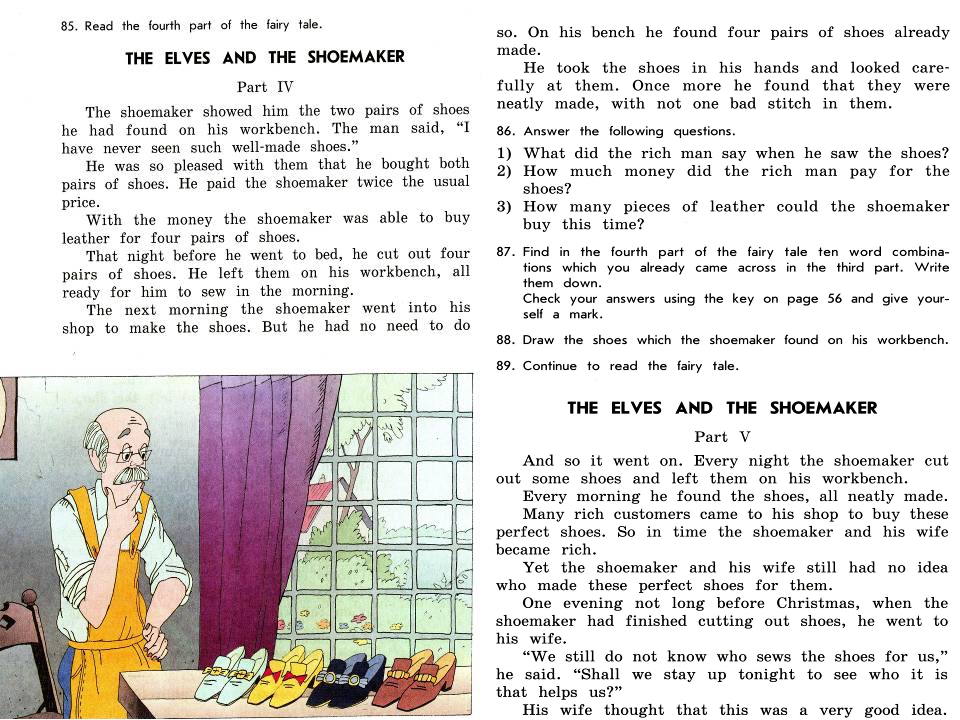 Perhaps our life isn’t very exciting, but we like it.»
Perhaps our life isn’t very exciting, but we like it.»
How old is Andrew?
Where does he live?
How many tourists come in summer every day?
Who does he make breakfast for?
When does he collect the post from the boat?
Sky-diver
Clem Quinn was always interested in flying. When he was five, he tried to fly by jumping off the garden shed with a golf umbrella. But when he grew up he didn’t become a pilot, he became a taxi driver. Then 20 years ago he did a parachute jump and loved it. He decided that being a taxi driver in London was a lot more dangerous than jumping out of a plane, so he moved to the country to learn parachute jumping and sky-diving. He is now a full-time teacher of sky-diving. He says: «I love sky-diving because the world looks so good — blue sky, green fields, white clouds. You float through the air, it’s like floating in water. You can see forever, all the way to the French coast. The views are fantastic. You can forget all your worries. People think it is dangerous but it’s very safe. Football is much more dangerous. Footballers often have accidents. When did you last hear of a sky-diving accident? Next July I’m going to do a sky-dive with 100 people from six planes. That’s a record. I’m never going to retire. I’m going to jump out of planes until I’m an old man.»
You float through the air, it’s like floating in water. You can see forever, all the way to the French coast. The views are fantastic. You can forget all your worries. People think it is dangerous but it’s very safe. Football is much more dangerous. Footballers often have accidents. When did you last hear of a sky-diving accident? Next July I’m going to do a sky-dive with 100 people from six planes. That’s a record. I’m never going to retire. I’m going to jump out of planes until I’m an old man.»
How old was Clem when he first tried to fly?
What did he do when he grew up?
Where did he move to learn sky-diving?
What is sky-diving like?
What is more dangerous than sky-diving?
The Life of Ryan I’ve lived in a foreign country: in Japan, actually. I lived in Osaka for a year. I enjoyed it very much.
 I loved the food. I have worked for a big company. I worked for Nissan, the car company, that’s why I was in Japan. That was two years ago, then I got another job.
I loved the food. I have worked for a big company. I worked for Nissan, the car company, that’s why I was in Japan. That was two years ago, then I got another job.
Have I stayed in an expensive hotel? No, never — only cheap hotels for me, but I have flown in a jumbo jet — four or five times, actually. I’ve never cooked a meal for a lot of people. I love food but I don’t like cooking. Sometimes I cook for me and my girlfriend but she likes it better if we go out for a meal!
I’ve never met a famous person — oh, just a minute, well not, met! I saw a famous politician at the airport once. Oh, who was it? I can’t remember his name. I’ve only seen one Shakespeare play. When I was at school, we saw «Romeo and Juliet». It was OK. I’ve driven a tractor. I had a holiday job on a farm when I was 17. I enjoyed that.
Good news — I’ve never been to hospital. I was born in hospital, of course, but that’s different. Bad news — I’ve never won a competition. I do the lottery every week but I’ve never won a thing!
I do the lottery every week but I’ve never won a thing!
How long did he live abroad?
What did he do in Japan?
What famous people has he seen?
What did he do on a farm when he was 17?
When was he in hospital last?
Behind the Mirror Alice was in a beautiful garden. There was a house
with the door open. Alice went in. In the kitchen there was
a woman with a baby, a frog laying the table, a cook and a fish. The frog was putting the plates and glasses on the table upside down! The knives and forks were in the wrong position! The fish was standing near the woman. It had a letter. The kitchen was full of smoke and the cook was smashing plates on the floor! Everybody was sneezing! «There is too much pepper in the soup,» said the woman and sneezed again.
«A letter for the Duchess from the Queen,» said the
fish. «What does it say?» asked the Duchess. The fish read, «Dear Duchess, come and play croquet with me. NOW.» «Oh dear, I must go,» said the Duchess. «I must play croquet
with the Queen. There are always tasty things to eat. There
are cakes and tarts and fizzy things to drink at the castle.» The Duchess gave the baby to Alice. «What a funny baby,» said Alice. «It’s got a big nose and small eyes. It’s all pink. Oh,» she shouted. «It’s a PIG!» The pig
jumped down and ran away. » What strange
people,» thought Alice. «I think I’ll go back outside.»
What was there in a beautiful garden?
Who was there in the kitchen?
Why was everybody sneezing?
Why the Duchess must go?
What tasty things to eat are there?
Тексты для чтения в 6 классе(английский язык) | Материал по английскому языку (6 класс) на тему:
Тексты с заданиями для чтения
по английскому языку (6 класс)
I
The giraffe.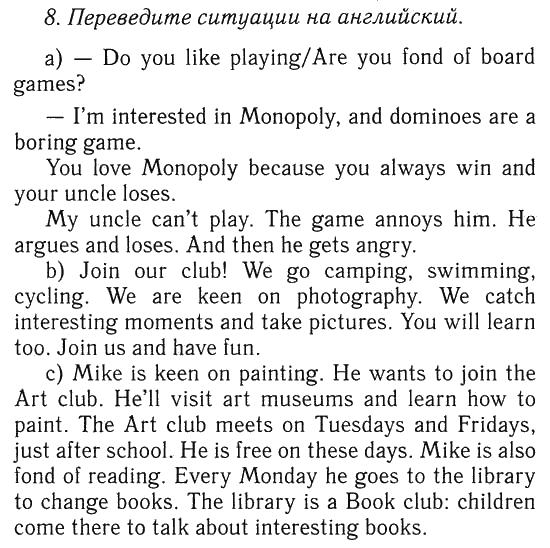
The giraffe is the tallest animal. His head is about five meters above the ground. It has its good and bad sides. The giraffe can eat leaves from high trees because he has a long neck and a strong tongue. But it’s difficult for the giraffe to eat the grass. When the giraffe drinks water, lions and leopards often hide in the tall grass ready to catch him. It is very bad for the giraffe, because he can’t raise his head quickly and run away. The giraffe can live for months without water.
He gets most of the water from what he eats. Also, because his heads is so far from the ground, a giraffe can see danger and can quickly walk away or run away.
1) The giraffe is the strongest animal.
a) true b) false c) not stated
2) He has a long neck.
a) true b) false c) not stated
3) The giraffe eats only grass.
a) true b) false c) not stated
4) The giraffe can run fast.
a) true b) false c) not stated
5) He can’t raise his head fast.
a) true b) false c) not stated
6) The giraffe can’t live without water for a long time.
a) true b) false c) not stated
7) He can see danger because he has a long neck.
a) true b) false c) not stated
II
A story about a parrot
Once there lived a man who had a parrot. The man tried to teach the parrot to speak. But the parrot could learn only the phrase, “There is no doubt about it.” (в этом нет сомнения). The parrot always said these words and always gave the same answer. “There is no doubt about it”.
At last the man decided to sell (продавать; sold = V 2) the parrot. He went to the street and began to cry, “Twenty dollars for a very clever parrot!”
One woman heard this.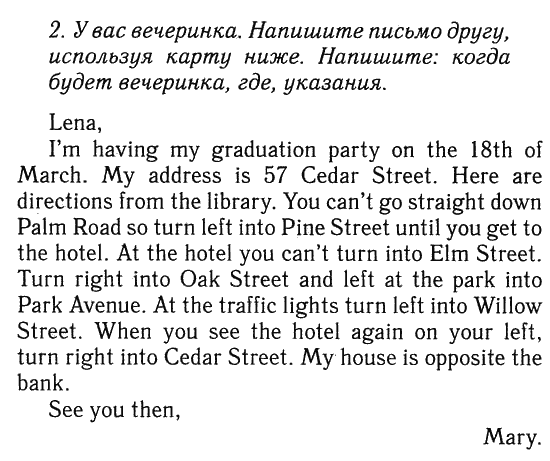 She came up to the parrot and asked, “ Are you worth twenty dollars?” The parrot answered, “There is no doubt about it”.
She came up to the parrot and asked, “ Are you worth twenty dollars?” The parrot answered, “There is no doubt about it”.
“What a clever parrot”, she said and bought the bird.
After some days the woman couldn’t listen to the parrot any more. She said, “What a fool I was to buy this parrot and throw away so much money.Twenty dollars!”
Then the parrot cried, “There is no doubt about it”.
This time the parrot was right.
True, false or not stated:
1. The parrot learned a lot of words.
a) true b) false c) not stated
2. The man liked his clever bird so much that he decided not to sell it.
a) true b) false c) not stated
3. The woman thought that the parrot was very clever.
a) true b) false c) not stated
4.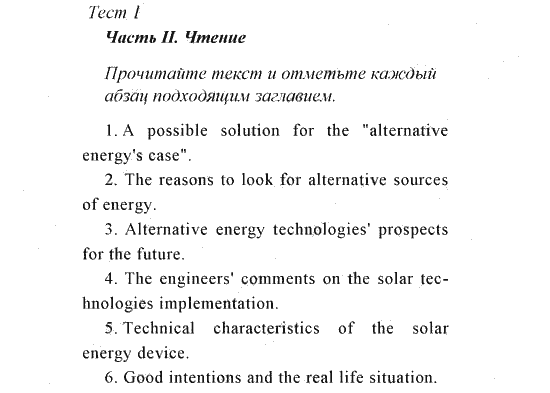 The parrot said the same words.
The parrot said the same words.
a) true b) false c) not stated
5. The woman sold the parrot.
a) true b) false c) not stated
III
The King and the Painter
There was a king who thought he could paint very well. His pictures were very bad but the people to whom he showed them were afraid to tell him the truth. They all said that his pictures were wonderful and they liked them very much.
One day the king showed his pictures to a great painter who lived in his country and said, «I’d like to know what you think of my pictures. Do you like them?»
The painter looked at the king’s pictures and said, «My king, I believe that your pictures are bad and you will never be a good artist. «
«
The king got very angry and sent the painter to prison. Two years passed and the king wanted to see the painter again.
«I was angry with you,» he said, «because you didn’t like my pictures. Now you are a free man again and I am your friend.» The king talked with the painter and invited him for dinner. The dinner was wonderful. And they enjoyed it very much.
After dinner the king showed his pictures to the painter again and asked, «Well, how do you like them now?» The painter turned to a soldier who was standing behind him and said, «Take me back to prison.»
I. Was the King a good painter?
1.Yes, people liked his pictures very much.
2.No, his pictures were bad.
3.He didn’t paint pictures at all.
II.Why were people afraid to tell the King the truth about his pictures?
1.Because they were afraid of him.
2.Because they enjoyed the dinner.
3.Because the King could paint very well.
III.Did the painter like the King’s pictures?
1.Yes, he liked them very much.
2.No, he said that the King was a bad artist.
3.The King didn’t show the pictures to the painter.
IV.What happened to the great painter who told the King the truth?
1.The king invited him for dinner.
2.The king sent him to prison.
3.The king talked with the painter.
V.Why did the painter asked the soldier to take him back to prison?
1.Because he didn’t like the king’s pictures.
2.Because he enjoyed the dinner.
3.Because he liked to be in prison.
Практика и контроль чтения для 6 класса в формате ОГЭ | Учебно-методический материал по английскому языку (6 класс):
№1 Reading.
Прочитайте текст.
A Long Way to Travel for Your Dinner.
A1This is an Arctic tern. It is not a very big bird. It is only about six inches (16 centimetres) from its bright red beak to its tail. But soon this small bird will begin a wonderful journey. It will fly from one end of the Earth to the other – a journey of about 12,000 miles (18,000 kilometres).
A2 The tern spends the summer in the Arctic, but it cannpt spend the winter there. It is too cold and there is no food. If the turns stays in the Arctic, it will die.
A3 In autumn the Arctic tern will leave the North Pole and fly south across the equator to the South Pole. When spring comes again in the northern hemisphere, the tern will come back to the Arctic.
A4 how do this small birds make this wonderful journey? We don’t know the answer. Perhaps they use the sun, the moon and the stars as a compass. If it is cloudy or foggy, the birds will not migrate. In its life, an Arctic tern travels as far as to the moon and back. That’s a long way to travel for your dinner!
Установите соответствие заголовков 1 – 5 абзацам А1 – А4. один заголовок лишний.
один заголовок лишний.
- Why does it leave the Arctic in winter?
- The description of the bird.
- The unusual bird.
- The means of orientation.
- The autumn and spring migrations.
Определите, являются ли данные утверждения соответствующими (True) тексту или несоответствующими (False)
A5 | An Arctic tern is a very big bird. | True | False |
A6 | The bird travels round the world. | True | False |
A7 | The bird can’t spend the winter in Arctic. | True | False |
A8 | There is nothing to eat in Arctic in the winter. | True | False |
A9 | The tern will return to Arctic, when the spring ends. | True | False |
A10 | Perhaps, these birds use the sun, the moon, and the stars as a compass. | True | False |
A11 | The birds will migrate only when it is foggy or cloudy. | True | False |
A12 | An Arctic tern travels to the moon for its dinner. | True | False |
№2 I.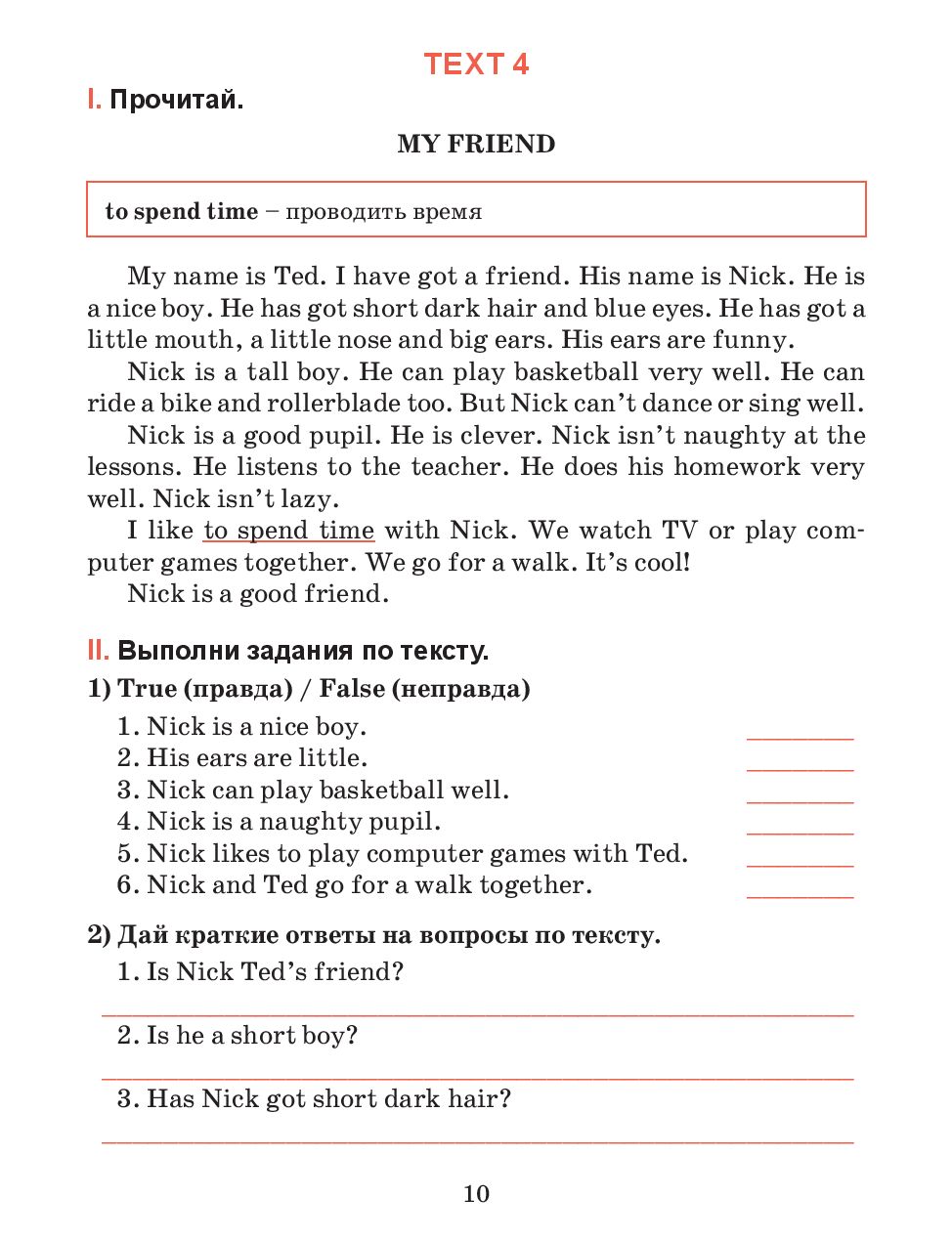 Reading
Reading
Прочитайте текст.
The Legend of Beowulf
A1 Once upon a time, there was a horrible monster called Grendel. He was half-man and half-monster. He lived in Denmark.
A2 One day, he came to the king’s castle but nobody could kill the monster. A knight called Beowulf heard about the problem and went to Denmark to help the king.
A3 One night when Beowulf and his men went to sleep the monster came into the castle and killed one of them. Beowulf woke up and killed the monster. When he came back to the castle, the king was very happy and he gave Beowulf presents and money.
A4 Beowulf went back to his country and became a king. He was a wise king for fifty years. But one day, a dragon came to his country and attacked people. The knights were afraid and they did not want to fight the dragon. King Beowulf was an old man but he went to the dragon’s cave with his men and killed the ugly monster.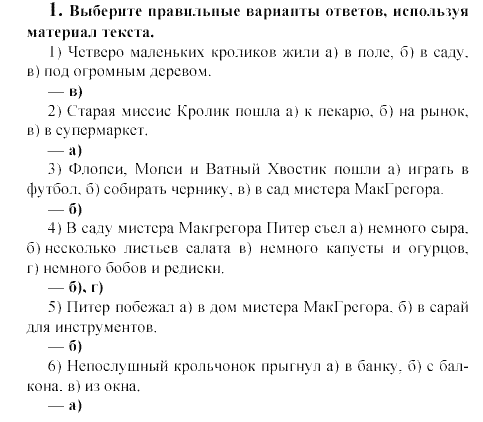
Установите соответствие заголовков 1-5 абзацам А1-А4. один заголовок лишний.
- A brave knight. 4A fairy-tale monster
- Gifts for the hero.
- A terrible creature. 5 A new danger.
Определите, являются ли данные утверждения соответствующими (True) тексту или несоответствующими (False).
A5 | Grendel lived in Finland. | True | False |
A6 | The king’s knights couldn’t defeat the monster. | True | False |
A7 | Beowulf was a king’s servant. | True | False |
A8 | When Beowulf came back, the king was very sad and didn’t give him anything. | True | False |
A9 | Beowulf was a good king. | True | False |
A10 | Beowulf was the king for forty years. | True | False |
A11 | Beowulf was afraid of the dragon. | True | False |
A12 | The dragon was dangerous. | True | False |
№3 Reading.
Вы прочитаете рассказ о писательнице Хэриет Бичер Стоу. Шесть предложений убраны из рассказа. Выберите из предложений А—G то предложение, которое подходит каждому пропуску I —6. Есть одно лишнее предложение, которое вам не надо использовать. Занесите ответы в таблицу.
Шесть предложений убраны из рассказа. Выберите из предложений А—G то предложение, которое подходит каждому пропуску I —6. Есть одно лишнее предложение, которое вам не надо использовать. Занесите ответы в таблицу.
Harriet Beecher Stowe
A. Each night after putting her six children to bed, she worked on her novel.
B. Slaves had no rights; they could be sold and bought.
C. It was a book that spoke out against slavery.
D. Disagreements between the North and the South grew.
E. Yet “Uncle Tom’s Cabin” surely played a part.
F. Yet most Northerners were not strongly against slavery.
G. Over 300,000 copies were sold in a year.
Sometimes a book can help change history. One book that certainly did was “Uncle Torn’s Cabin”, written by Harriet Beecher Stowe. (I) At the time Harriet Beecher Stowe wrote her novel, there were over 3.5 million slaves in the United States. Slaves were usually in the cotton-growing states of the South.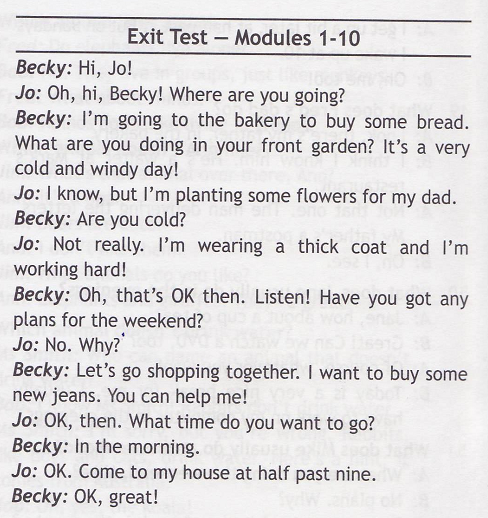 The Northern states had abolished slavery. (2) They were willing to let slavery’ continue in the South. Stowe was determined to make people understand that slavery was evil. (3) She told the story of characters like Tom, a courageous old slave, Simon Legree, a cruel man who buys Tom, and Eliza, who makes a dangerous escape to freedom. “Uncle Tom’s Cabin” was published in 1852. (4) People reacted strongly to the novel. In the North many people were finally convinced that slavery must be ended. In the South many people were very angry. (5) By 1861 the two sections of the country were at war. The Civil War, which lasted until 1865, finally brought an end to slavery. Of course, the Civil War had many different causes. (6) Stowe met President Lincoln in 1862. As Lincoln took her hand, he said, “So you’re the little woman who started the big war.”
The Northern states had abolished slavery. (2) They were willing to let slavery’ continue in the South. Stowe was determined to make people understand that slavery was evil. (3) She told the story of characters like Tom, a courageous old slave, Simon Legree, a cruel man who buys Tom, and Eliza, who makes a dangerous escape to freedom. “Uncle Tom’s Cabin” was published in 1852. (4) People reacted strongly to the novel. In the North many people were finally convinced that slavery must be ended. In the South many people were very angry. (5) By 1861 the two sections of the country were at war. The Civil War, which lasted until 1865, finally brought an end to slavery. Of course, the Civil War had many different causes. (6) Stowe met President Lincoln in 1862. As Lincoln took her hand, he said, “So you’re the little woman who started the big war.”
№4 Reading.
Вы прочитаете рассказ о Давиде и Голиафе. Выберите самое подходящее заглавие из списка А—I для каждой части 1—8 этого рассказа и запишите его в рамку.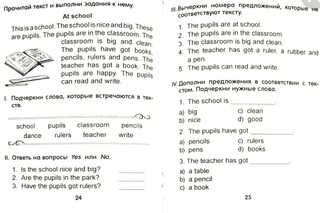 Есть одно лишнее заглавие, которое вам не надо использовать. Занесите ответы в таблицу.
Есть одно лишнее заглавие, которое вам не надо использовать. Занесите ответы в таблицу.
David and Goliath
David lived in Bethlehem. He was a shepherd. He worked every day in the fields. He watched his father’s sheep and protected them from wild animals. David was also a very holy man. He prayed to God regularly. He believed that God protected him when he was with his sheep.
2.
King Saul was the king of Israel. He was in a war with the Philistines. The Philistines were evil people. They did not believe in God. They had many soldiers in their army. Many of the soldiers were scary giants. The largest giant was named Goliath.
3.____________________________________
Every day Goliath shouted to the Israeli soldiers across the river. He said, “Choose a man to fight me. I am big and strong. No one can defeat me.” Everyone was afraid of Goliath. No Israeli soldier wanted to fight him.
4.
Three of David’s brothers were soldiers. They were with King Saul’s army. David went one day to the battlefront. He wanted to bring food to his brothers. He wanted them to fight well.
They were with King Saul’s army. David went one day to the battlefront. He wanted to bring food to his brothers. He wanted them to fight well.
5.
David arrived at the soldiers’ camp. He heard Goliath shout. All of the soldiers were afraid of him. David said that he would fight Goliath. King Saul said that David was too small and too weak. “Goliath is a giant. He is a professional soldier. You cannot win, David. You are weak and you have no training as a soldier.”
6.
David knew that God would help him. “God protects me with my sheep. I killed lions and bears because of God’s help. I will fight Goliath. God will help me.” David took his sling with him. He also took five rocks from the river. He did not wear armour. He went to Goliath.
7.
Goliath thought that David was weak. “You cannot kill me,” he said. But David took his sling. He fired a rock and hit Goliath in the head. Goliath fell onto the ground. David quickly grabbed his sword. He stabbed Goliath with the sword and killed him.
He stabbed Goliath with the sword and killed him.
8.
All of the Philistines were frightened. God helped David kill their giant. They ran away quickly. David was a hero in Israel. The people of Israel made David their King when King Saul died.
A. Belief in God
B. A Boastful Giant
C. A Brave Decision
D. A War with Giants
E. Grateful People
F. Things for the Battle
G. Fight and Victory
H. A Shepherd’s Life
I. Food for Brothers
Часть | I | 2 | 3 | 4 | 5 | 6 | 7 | 8 |
Заглавие |
№5 Reading.
Вы прочитаете рассказ “Корабль-призрак”. Пять предложений убраны из рассказа. Выберите из предложений А—F то предложение, которое подходит
каждому пропуску 1—5. Есть одно лишнее предложение, которое вам не надо использовать. Занесите ответы в таблицу.
Ghost Ship
A. They called this dream route the Northwest Passage.
B. The ship was named after the Roman Emperor.
C. What we do know is that the entire crew was dead.
D. It was a strange journey.
E. No one heard from them or saw them until 1775.
F. That’s a long trip — especially if you live in New York and want to sail to San Francisco.
For a long time the only way to sail from the Atlantic to the Pacific was to the south, around the tip of South America. (1) So queens, captains and merchants dreamed of finding a shortcut through the northern part of Canada. (2)
The first ship to make the voyage through the Northwest Passage was the Octavius. (3) Here’s why:
In 1762 the Octavius and her crew got iced in off the northern coast of Alaska. They were stuck. (4) The ship was spotted off the coast of Greenland by a whaling boat.
How could the Octavius have sailed for 13 summers and 13 freezing winters, from the Pacific to the Atlantic?
No one knows. (5) They had frozen or starved that first winter in 1762, and the ship had drifted for 13 years on its own — with a crew of the dead.
№6 Reading.
Вы прочитаете пять рассказов о странных происшествиях. Ответы на вопросы 1 —11 выберите из рассказов А—Е. Рассказы можно использовать неоднократно.
In which of the stories does the writer state the following:
1. They heard the bad news on the phone
2. The weather changed very quickly.
3. They don’t meet very often.
4. They lost their house while they were abroad.
5. They were talking about their school life.
6. They were walking near the lake.
7. It happened during the break.
8. He managed to take a photo.
9. There were two people in the room.
10. The dog was frightened.
11. Sixteen people watched it.
12. His dream came true.
Five Strange Stories
A
Tony Wilson was walking his dog Sally last July when Sally suddenly stopped. “She was very upset about something,” said Tony afterwards, “but I didn’t know what it was. We were next to Red Lake, near our house. Then, 1 saw something in the lake. Sally was very scared, but I went to investigate. I couldn’t see clearly, but there was definitely something there. It wasn’t a boat, but it was about the same size as a small boat. I had my mobile phone with me, so I took a photo.” Three days later, Tony’s photo appeared in several national newspapers. No one knows what Tony saw, but people have called it “The Red Lake Monster”.
В
Fifteen schoolchildren were playing in the playground during the lunchtime break when one of them pointed up to the sky. Soon, all the children were looking up. Right above the playground, was a bright round object. “I don’t know what it was,” said Jilly, one of the children. “I know it wasn’t a plane, though.” Alan Craig, the teacher who was with them, also saw the object. “It stayed above us for about five minutes,” he said, “before it flew off. Was it a UFO? I suppose so, because none of us know what it was!”
C
Mike and Carla were watching TV when it suddenly became very cold. “It was very strange,” said Carla, “because it was the middle of summer. I put a sweater on, and we carried on watching TV. Mike saw it first. It looked just like a person, but it was grey and we could see through it. It walked all the way across the room, and through the wall! It’s the strangest thing I’ve ever seen! I don’t really believe in ghosts, but I can’t explain what we saw.”
D
Twelve-year-old Toby was on holiday with his parents in Italy when he said, ”1 had a weird dream last night. I dreamt our house was on fire and all my toys were destroyed.” Two hours later, Toby’s dad’s mobile phone rang. It was their next-door neighbour. “I’m afraid I’ve got some bad news, Carl. We don’t know how it started, but your house burnt down last night. The firemen did their best, but there’s not much left. At least no one was hurt.”
E
Liza and Christine were friends from school. Now in their thirties, they meet once or twice a year, usually at a restaurant in London. On one occasion, they were chatting about their days at school. “Do you remember Fiona Shaw?” asked Liza. “1 often think about her,” she said. “I wonder what happened to her.” A voice at the next table interrupted them. “Liza? Christine? I can’t believe it! It’s me. Fiona Shaw. Remember me?”
№7 Reading.
Вы прочитаете рассказ “В пещере”. Шесть предложений убраны из рассказа. Выберите из предложений А—G то предложение, которое подходит каждому пропуску 1—6. Есть одно лишнее предложение, которое вам не надо использовать. Занесите ответы в таблицу.
A. But it was no good, it was too heavy.
B. They were smooth and wet.
C. If there is air getting into the cave perhaps there is anotherway in.
D. The door is closing!
E. I pulled at the ring with all my might.
F. We stood with our mouths hanging open in surprise.
G. Inch by inch we ran our hands over the rock.
In the Cave
In the corner we saw three huge stone boxes full of lumps of gold and crudely made coins. (1) There must have been thousands of them, more! We all went over and picked up the metal letting it fall through our fingers, and back into the box.
Suddenly John jumped back. We all looked round to see him struggling with Gagool. “Look out! (2)” John shouted. We all ran over, but before we could help, Gagool made a last effort and freed herself and dived for the door. But she was too late, the heavy stone slab came down on her.
We all tried to lift the stone up. (3) We must have tried for an hour, bul in the end the torches went out, and we were still no closer to moving the heavy stone.
“Why is the air in the cave still fresh after all these hours?” asked Sir Heniy, after several more hours had passed. “(4)”
There was nothing to lose, so we started feeling the walls and floor to see if there were any cracks. (5) After an hour and a half John cried out, “Hold on, I think I have found something. Come here!” With one of our last matches we were able to see a metal ring set into a stone. The air was blowing through the cracks around the edge of the block. (6) When it opened we could see a narrow staircase leading down into the mountain.
Before we went down the stairway we filled our pockets and a couple of sacks with gold. In the darkness we groped our way down the stairs and along a passage.
№8 Reading.
Прочитайте тексты и установите соответствие между текстами и их заголовками: к каждому тексту, обозначенному буквами А–G, подберите соответствующий заголовок, обозначенный цифрами 1–8. Используйте каждую цифру только один раз. В задании есть один лишний заголовок.
1. The scientific explanation
2. The real shape
3. A lucky sign
4. Some tips
5. Places without rainbows
6. A personal vision
7. A bridge between worlds
8. Impossible to catch
A. Two people never see the same rainbow. Each person sees a different one. It happens because the raindrops are constantly moving so the rainbow is always changing too. Each time you see a rainbow it is unique and it will never be the same! In addition, everyone sees colours differently according to the light and how their eyes interpret it.
B. A rainbow is an optical phenomenon that is seen in the atmosphere. It appears in the sky when the sun’s light is reflected by the raindrops. A rainbow always appears during or immediately after showers when the sun is shining and the air contains raindrops. As a result, a spectrum of colours is seen in the sky. It takes the shape of a multicoloured arc.
C. Many cultures see the rainbow as a road, a connection between earth and heaven (the place where God lives). Legends say that it goes below the earth at the horizon and then comes back up again. In this way it makes a permanent link between what is above and below, between life and death. In some myths the rainbow is compared to a staircase connecting earth to heaven.
D. We all believe that the rainbow is arch-shaped. The funny thing is that it’s actually a circle. The reason we don’t see the other half of the rainbow is because we cannot see below the horizon. However, the higher we are above the ground, the more of the rainbow’s circle we can see. That is why, from an airplane in flight, a rainbow will appear as a complete circle with the shadow of the airplane in the centre.
E. In many cultures there is a belief that seeing a rainbow is good. Legends say that if you dig at the end of a rainbow, you’ll find a pot of gold. Rainbows are also seen after a storm, showing that the weather is getting better, and there is hope after the storm. This is why they are associated with rescue and good fortune. If people happen to get married on such a day, it is said that they will enjoy a very happy life together.
F. You can never reach the end of a rainbow. A rainbow is all light and water. It is always in front of you while your back is to the sun. As you move, the rainbow that your eye sees moves as well and it will always ‘move away’ at the same speed that you are moving. No matter how hard you try, a rainbow will always be as far away from you as it was before you started to move towards it.
G. To see a rainbow you have to remember some points. First, you should be standing with the sun behind you. Secondly, the rain should be in front of you. The most impressive rainbows appear when half of the sky is still dark with clouds and the other half is clear. The best time to see a rainbow is on a warm day in the early morning after sunrise or late afternoon before sunset. Rainbows are often seen near waterfalls and fountains.
Ключ
№1
A1 2 | A2 1 | A3 5 | A4 4 | A5 false |
A6 true | A7 true | A8 true | A9 true | A10 true |
A11 false | A12 false | A13 B | A14 A | A15 B |
A16 B | A17 A | A18 B | A19 A | A20 B |
A21 B | A22 C | A23 A | A24 C | A25 B |
B1 were | B2 cheaper | B3 hours | B4 people | B5 them |
№2
A1 3 | A2 1 | A3 2 | A4 5 | A5 false |
A6 true | A7 false | A8 false | A9 true | A10 false |
A11 false | A12 true | A13 A | A14 A | A15 A |
A16 B | 17 B | A18 A | A19 C | A20 C |
A21 B | A22 C | A23 C | A24 C | A25 C |
B1 was | B2 narrower | B3 went | B4 people | B5 third |
№3
#4
1 H , 2 D, 3 B , 4 I , 5 C , 6 A , 7 G , 8 B
#5
1 F, 2 A, 3 D, 4 E, 5 C
#6
1 D, 2 C, 3 E, 4 D, 5 E, 6 A, 7 B, 8 A, 9 C, 10 A, 11 B, 12D
№7
1 F, 2 D, 3 A, 4 C, 4 G
#8
A – 6
B – 1
C – 7
D – 2
E – 3
F – 8
G – 4
Задания к текстам для 6 класса в трех уровнях сложности
Text 1
Healthy Food
1. Eating is fun, especially when you are hungry. Most people have a favourite food. Some people enjoy eating sweet things like cakes, chocolates and ice cream. Other people enjoy savoury foods like cheese and meet. Enjoying eating is our body’s way of making sure that is gets the things it needs to work properly.
2. Food helps us to keep warm, talk, run and do all the other things we do. It helps us to grow and stay healthy.
3. Vitamins also help us to be healthy. Scientists name vitamins after the alphabet. All of them are very important, for example: vitamin C keeps our skin and gums healthy. It is found in fresh fruit and green vegetables, such as oranges, blackcurrants, lettuce. Brussels sprouts and spinach also contain a lot of vitamin C.
4. Vitamin D helps our bones to grow strong and hard, and we are able to make it for ourselves if our skin gets enough sunlight. But we can also get vitamin D if we eat fish, milk, butter, cheese and margarine. Some people buy pills and tablets containing vitamins. But most of us get more than enough of them from our food.
Level 1
1) Прочитай текст (1-4) и найди соответствия с заголовками (A—D).
A. Витамины и алфавит. С. Ты не можешь жить без еды.
B.О вкусах не спорят. D.Укрепляющий витамин.
2)Закончи предложения, выбрав правильный вариант.
1. Food helps us 2. Vitamins are called after 3. We can get vitamin D
a) to keep fit a) the colors a)in oranges
b) to be healthy b) fruits and vegetables b)in milk
c) to get fun c) the alphabet c) in juice
Level 2
1) Прочитай текст. Отметь предложения, которые соответствуют тексту-T(True), и предложения, которые не соответствуют тексту,- F (False).
a) When we enjoy eating our body gets everything to work well.
b) To get vitamins you need to buy pills.
c) Vitamin C is important for our skin.
d) You can get vitamin D only eating special food.
2) Переведи на русский язык.
Hungry __________
Stay healthy _______
Important__________
Fresh fruit____________
Sunlight_______________
Level 3
1) Задай три вопроса к тексту.
2) Расставь предложения по порядку и перескажи текст.
1.Vitamins are named after the alphabet.
2. The food helps us to grow and stay healthy.
3. People have different tastes in eating.
4. Vitamin C is found in fresh fruit and green vegetables.
5. Some people like sweet things, other prefer savoury food.
6. We can get vitamins from our food.
7. We are able to make vitamin D if our skin gets enough sunlight.
Text 2
With the words” Elementary, my dear Watson…”, the most famous detective of all times, Sherlock Holmes, starts to explain something to his friend., Dr.Watson. That phrase has now entered the English language.
Sherlock Holmes first appeared in 1882. He became famous in “The Adventures of Sherlock Holmes”. After that came the whole series of books about him.Many thousands of books about Sherlock Holmes are still sold every year.
Who invented Sherlock Holmes? Arthur Conan Doyle was his inventor. He was a doctor. In 1882 he moved from Scotland to England to set up a practice. One of the doctors he worked with, Dr. Joseph Bell, was the model for Sherlock Holmes’s friend, Dr.Watson. Conan Doyle’s medical knowledge was a great help to him in his detective stories.
Conan Doyle started the fashion of the detective story, which goes on.
And what sort of man is Sherlock Holmes? We learn a lot about him from the stories in which he appears. He is a quiet man, who only speaks when he has something to say. He smokes a pipe (he has a collection of them). He plays the violin. He carries a large magnifying glass. He lives at 221B Baker Street in London.
If you go to London, you will not be able to find 221B Baker Street. But instead, you can go to a pub called the “Sherlock Holmes”. In that pub there is a room exactly like Sherlock Holmes’s room at 221B Baker Street as described in Conan Doyle’s stories.
Level 1
1. Выбери подходящий заголовок к тексту.
A. Doctor Watson and Sherlock Holmes.
B. Conan Doyle and Dr. Joseph Bell.
C. Conan Doyle’s Family.
D. Conan Doyle and his characters.
2. Переведи с английского.
elementary
detective
start
practice
medical
collection
3. Закончи предложения, используя текст.
1)Arthur Conan Doyle invented…. .
2) Conan Doyle started the fashion of … .
3) Dr. Joseph Bell was… .
4) Sherlock Holmes is a quiet man … .
Level 2
1. Выбери предложение, соответствующее содержанию текста.
A. Dr. Watson was Dr. Bell’s assistant.
B. Dr. Watson was Conan Doyle;s friend.
C. Dr. Watson was Conan Doyle’s book character.
D. Dr. Watson was Sherlock Holmes’s relative.
2. Найди неверное утверждение.
A. Dr. Watson was Sherlock Holmes’s friend.
B. Conan Doyle was a doctor.
C. There is 221B Baker Street in London.
D. The fashion of the detective stories goes on.
3.Найди в тексте глаголы в
Present Simple Tense______________
Past Simple Tense ________________
Level 3
1) Задай три вопроса к тексту.
2) Расставь предложения по порядку и перескажи текст.
1. Conan Doyle started the fashion of the detective story.
2. Sherlock Holmes lives in Baker Street in London.
3. Sherlock Holmes first appeared in 1882.
4. In London there is a pub called the “ Sherlock Holmes”.
5. Arthur Conan Doyle wrote the stories about Sherlock Holmes. He was a doctor.
6. Sherlock Holmes was a quiet man, he smokes a pipe and plays the violin.
Text 3
1.The Earl of Sandwich lived long ago in England. He was a fanatic about playing cards. He didn’t even want to stop playing to eat a meal and refused to put his cards away. So his servant invented a quick meal for him. He put some meat between two slices of bread, so that the Earl could hold his meal in one hand and play cards with the other.
2.Sandwiches were great favourites in Victorian England. It was a tradition to take an afternoon tea at about 5 o’clock, and many rich families ate sandwiches at that time. Cucumber sandwiches were very popular. The sandwiches were very small and delicate. Sandwiches are less elegant now and often much bigger.
3.The English eat millions of sandwiches every day.They are a typical “snack” meal because they are easy and quick to prepare. You can buy sandwiches if you don’t want to make them yourself. There are thousands of sandwich bars and cafes and even some restaurants that sell them.
Level 1
1) Прочитай текст (1-3) и найди соответствия с заголовками (A—C).
A. Еда, быстрая в приготовлении.
B. Граф Сэндвич и его слуга.
C. Любимая еда англичан в эпоху викторианства.
2) Из выделенных слов выбери слова по теме.
3) Закончи предложения, используя текст.
1. The Earl’s of Sandwich servant invented … .
2. In Victorian England it was a tradition … .
3. The sandwiches are a typical “snack” meal because … .
4. You can buy sandwiches in … .
Level 2
1)Найди в тексте глаголы в
Present Simple Tense______________
Past Simple Tense ________________
2) Ответь на вопрос, выбрав правильный вариант.
1. What kind of meal did the Earl’s of Sandwich servant invent?
a) quick and convenient.
b) very delicious
c) very good for health
d) junk food
2. What was one of great traditions in Victorian England?
a) make cucumber sandwiches
b) cut the crusts off the bread
c) have 5 o’clock tea
d) eat lots of sandwiches
3. What kind of sandwiches do people have today?
a) very elegant
b) very big
c) with many slices of bread
d) much bigger than they used to be
4. Why do people like to have sandwiches for their meal?
a) Because sandwiches are a typical “ snack” meal.
b) Because people can do sandwiches themselves.
c) Because sandwiches are easy and quick to cook.
d) Because people can buy sandwiches almost everywhere.
Level 3
1) Задай три вопроса к тексту.
2) Расставь предложения по порядку и перескажи текст.
1. Many rich families ate sandwiches at their afternoon tea at 5 o’clock.
2. They are a typical “snack” meal because they are easy and quick to prepare.
3. The Earl of Sandwich was fond of playing cards.
4. People can buy sandwiches in bars, cafes and even restaurants.
5. Cucumber sandwiches were very popular.
6. His servant invented a quick meal for him- sandwiches.
Text 4
1.William Shakespeare, the greatest English writerof drama, was born in 1564 in Stratford-on-Avon. We don’t know everything about Shakespeare’s early life. But we know that he studied at the Grammar School in Stratford, and that he became interested in the theatre when he was still a boy.
In 1586 Shakespeare went to London, where he worked in the theatre for some years before he began to write his own plays.
2.Shakespeare soon became well-known in London literary circles. Every play that he wrote was good news to the people of the capital. Queen Elizabeth I liked Shakespeare’s plays, and the actors were often invited to play before the Queen and later before the King James- a great honor in those days. By the end of the 16th century Shakespeare and his friends built their own theatre –the famous Globe Theatre.
3.But Shakespeare had many difficulties in his life. Less talented writers, whose plays were worse than his, often quarreled with Shakespeare and attacked him, the actors in his own theatre sometimes turned against him.
4.Now people in many countries love and honor Shakespeare for his plays, comedies and tragedies that are still modern and well-known all over the world.
Level 1
1) Прочитай текст (1-4) и найди соответствия с заголовками (A—D).
A. Известный драматург. C. Жизнь Шекспира.
B. Мировая известность. D. Трудности в жизни.
2) Из выделенных слов выбери слова по теме
Level 2
1) Закончи предложения, выбрав правильный вариант.
1. Shakespeare was especially good at 2. It was a great honor in those days
a) novels. a) to play before the Queen.
b) detective stories. b) to work in the theatre.
c) dramas. c) to write plays.
d) mystery plays. d) to live in London.
3. Shakespeare and his friends founded
a) a library.
b) a museum.
c) a theatre.
d) a cinema.
2) Найдите предложение не соответствующее тексту.
a) In his childhood Shakespeare got interested in the theatre.
b) The Queen and King of England liked his plays.
c) Shakespeare was widely known for his Globe Theatre.
d) Shakespeare had difficulties in his life.
Level 3
1) Задай три вопроса по тексту.
2) Расставь предложения по порядку и перескажи текст.
1. By the end of the 16th century Shakespeare and his friends built the famous Globe Theatre.
2. He became interested in the theatre from his childhood.
3. William Shakespeare was the greatest English writer.
4. Shakespeare’s plays, comedies and tragedies are loved and admired by a lot of people all over the world.
5. In London Shakespeare worked in the theatre and began to write his own plays.
6. Shakespeare had a lot of difficulties in his life.
Common Core State Standards: английский язык по искусству 6 класс
6.WHST.1
Напишите аргументы, сосредоточенные на содержании конкретной дисциплины.
6.WHST.1a
Представьте претензию (я) по теме или проблеме, подтвердите и отделите претензию (я) от альтернативных или противоположных утверждений, а также логически систематизируйте причины и доказательства.
6.WHST.1b
Подтвердите утверждение (я) логическим обоснованием и соответствующими точными данными и доказательствами, демонстрирующими понимание темы или текста, используя достоверные источники.
6.WHST.1c
Используйте слова, фразы и предложения, чтобы создать единство и прояснить отношения между претензиями, встречными исками, причинами и доказательствами.
6.WHST.1d
Создайте и поддерживайте формальный стиль.
6.WHST.1e
Предоставьте заключительное заявление или раздел, который следует из представленных аргументов и поддерживает их.
6.WHST.2
Напишите информативные / пояснительные тексты, включая повествование об исторических событиях, научных процедурах / экспериментах или технических процессах.
6.WHST.2a
Четко изложите тему, предварительно обозначив, что будет дальше; систематизировать идеи, концепции и информацию по более широким категориям в зависимости от достижения цели; включать форматирование (например, заголовки), графику (например, диаграммы, таблицы) и мультимедиа, когда это полезно для облегчения понимания.
6.WHST.2b
Развивайте тему, используя соответствующие, хорошо подобранные факты, определения, конкретные детали, цитаты или другую информацию и примеры.
6.WHST.2c
Используйте соответствующие и разнообразные переходы, чтобы создать единство и прояснить отношения между идеями и концепциями.
6.WHST.2d
Используйте точный язык и предметную лексику, чтобы сообщить или объяснить тему.
6.WHST.2e
Установите и поддерживайте формальный стиль и объективный тон.
6.WHST.2f
Предоставьте заключительное заявление или раздел, который следует из представленной информации или объяснения и поддерживает их.
6.WHST.3
(См. Примечание; не применяется как отдельное требование)
6 класс Языковое искусство / чтение
Обзор курса
В 6 классе Acellus Language Arts / Reading г-жа Дара Освальд помогает ученикам открывать для себя основные элементы литературы в различных литературных и информационных текстах. Она помогает студентам искать ключевые идеи и дополнительные детали в литературе, а затем учиться эффективно передавать идеи в своей собственной работе.Курс предусматривает обзор и практику использования стандартных правил английского языка в грамматике, правописании и лексике.Этот курс разработан Международной академией наук. Учить больше
Объем и последовательность
Раздел 1 — Рассказ — Элементы В этом разделе обсуждается рассказ, включая характеристики и черты характера, конфликт, точку зрения, сюжет, предсказания, повествование и обобщение. В стихотворении также обсуждается, и сравниваются и противопоставляются жанры.Также рассматриваются типы местоимений, смещения местоимений и интенсивные местоимения, а также использование письма, чтобы показать, а не сказать. Раздел 2 — Стратегии создания словарного запаса В этом разделе обсуждается рассказ «Ломакс», включая влияние слов на значение и тон, а также сцену на общую структуру. Также рассматриваются денотации и коннотации, синонимы, антонимы, использование модели Frayer, слова с множеством значений, префиксы, суффиксы и корни слов. Также включены советы по правописанию и контекстные подсказки, включая определения, синонимы, антонимы и примеры. Блок 3 — Значение Этот блок охватывает жанры сказки, басни и мифа. Он использует сказку «Лиса и ворона» для иллюстрации темы и обсуждает чтение графических историй и использование умозаключений и выводов. В нем используется рассказ «Три поросенка», чтобы проиллюстрировать перспективу, сравнение и противопоставление жанров, а также эссе «Похваление собаки» для обсуждения словарного запаса, целей автора и методов убеждения. Кроме того, для иллюстрации тона использована биографическая история Корри тен Боом. Раздел 4 — Образный язык и повествовательное письмо В этом разделе обсуждаются поэзия, включая аллитерацию, сравнения, метафоры, рифму и ритм, а также персонификацию. Также рассматриваются звукоподражания в графических рассказах и лексика, гиперболы и идиомы в драматургии, а также предварительный просмотр в написании повествования, закладывание основы, развитие истории, детали, включая скобки и неограничивающие элементы, и то, как хорошо завершить рассказ. Раздел 5 — Чтение информации В этом модуле обсуждается информационный и повествовательный текст, а также последовательность, описание и сравнение / противопоставление в эссе; причина / следствие, проблема / решение, основная идея, подтверждающие детали, факт / мнение и обобщение в статье; и сравнивая и противопоставляя авторов в биографии и автобиографии. Раздел 6 — Аргументы и убеждения В этом модуле обсуждается аргумент, в том числе, что такое аргумент, утверждение и свидетельство в статье, сравниваются и противопоставляются значения авторов с помощью фотографий, типов обсуждения и пяти этапов обсуждения. Раздел 7 — Навыки чтения в реальном мире В этом модуле обсуждаются особенности текста, беглый просмотр, сканирование, слова, которые часто путают, навыки словаря, комбинирование предложений, союзы, фрагменты предложений, слова с часто встречающимися ошибками, согласование подлежащего и глагола, пунктуация в конце предложения, запятые, апострофы, заголовки, числа, и заглавные буквы. Раздел 8 — Информационное письмо В этом модуле обсуждаются особенности формализованного письма, подход к письму с четырьмя квадратами для форматирования статьи, выбор темы / основной идеи, добавление вспомогательных деталей к статье, написание тезиса, добавление вспомогательных деталей к абзацам, добавление переходных слов и личных историй, написание введения, «зацепление» ваших читателей, написание заключения, а также составление и завершение вашей статьи. Раздел 9 — Чтение по жанрам В этом модуле используется рассказ «Падающие звезды» для обсуждения словарного запаса, обстановки, оттенков значений, образов, мотивации, действий и отношений.Он также охватывает глагольное время; глаголы действия, помощи и связи; и объединение информации. Раздел 10 — Исследование и убеждение В этом модуле обсуждается исследование темы и написание убедительного эссе, включая определение вашей темы, проведение исследования и сбор информации, а также размышления над новой информацией. Он также охватывает планирование, составление, редактирование, редактирование, публикацию и представление убедительного эссе.Искусство английского языка
Государственный совет по образованию имеет право принимать академические стандарты для каждой предметной области в классах K-12.
Стандарты ELA предназначены для подготовки учащихся к наиболее важным знаниям и навыкам грамотности 21 века, необходимым для преуспевания в высшем учебном заведении и в сфере труда. Стандарты делают упор на критическое и дивергентное мышление, решение проблем, активное слушание, распознавание шаблонов и аномалий, а также на оценку и вопросы исходного материала.
Стандарты усиливают три учебных смены ELA: регулярная практика со сложным текстом и его академической лексикой; чтение и письмо на основе доказательств из литературного и информационного текста; и накопление знаний с помощью содержательного литературного и информационного текста.
Скачать стандарты ELA
Все стандарты ELA от K – 12 помещены в один документ с оглавлением в начале. Представляя стандарты в вертикальной диаграмме по стандарту, а не отдельно по классам, мы стремимся подчеркнуть, как навыки чтения, письма, разговорной речи и аудирования, а также языковые навыки проходят по спирали на всех уровнях обучения, что приводит к готовности к послесреднему и рабочей силе. .
- В классах K – 5 стандарты указывают на важность закладывания прочной основы для чтения и письма.
- Средние классы, 6–8, укрепляют фундамент, увеличивая сложность выделения текста и задач.
- Наконец, в 9–12 классах особое внимание уделяется изысканности и стилю.
Поскольку стандарты со временем дополняют друг друга, мы настоятельно рекомендуем преподавателям пересмотреть стандарты уровня обучения до и после уровня, чтобы лучше понять, как стандарты их уровня соотносятся с общим развитием учащихся.
Поскольку стандарты со временем дополняют друг друга, преподавателям необходимо пересмотреть стандарты уровня обучения до и после его уровня, чтобы лучше понять, как стандарты их уровня вписываются в общее развитие учащихся.
Примечание: Государственный совет по образованию устанавливает требования для окончания средней школы (см. Политику средней школы 2.103). Согласно правилу SBE, учащиеся должны получить четыре единицы английского языка на уровне средней школы, чтобы получить диплом об окончании средней школы.
ELA факультативные
Загрузите утвержденные факультативы по английскому языку.
Библейские нормы
AP, IB и Кембридж
Посетите соответствующие веб-сайты, чтобы просмотреть стандарты для:
PPT — Рекомендации по изучению английского языка для учащихся 6–8 классов Презентация PowerPoint
Рекомендации по изучению английского языка для учащихся классов 6–8
Рекомендации для средней школы (6–8 классы) • Чтение уровень • Контексты • Сложность предмета • Цели оценки
Руководство по стилю
Уровень чтения • Все более сложный текст, независимость и умение • Отрывки пункта 1 (чтение) и 3 (речь и аудирование) варьируются от выше, на уровне или ниже уровня • По пунктам 2 (Письмо) и 4 (Исследование) отрывки на один балл ниже оцениваемой оценки
Словарь Используйте ясный язык и словарный запас на уровне оцениваемой оценки или ниже уровень Соответствует учащимся средней школы Словарь, измеряемый в контексте, должен быть как минимум на два уровня выше класса
Mi ddle Школьный контекст • Соответствующие • исторические персонажи и события • освоение космоса • школьное сообщество • роботы • несоответствующие • боязнь стоматологов • философия • конституционное построение • вождение • голосование • работа
Сложность предмета • Предметы должны включать диапазон сложности • Ожидаемая сложность для образцов заданий
Smarter Balanced English Language Arts Требования и оценка Цели • Утверждение 1: Чтение • Утверждение 2: Письмо • Утверждение 3: Говорение и аудирование • Утверждение 4: Исследование
Утверждение 1 в средней школе: Чтение Учащиеся могут внимательно читать и аналитически понимать ряд все более сложных литературных и информационных текстов.Избранный ответ, сконструированный ответ и элементы, усовершенствованные технологиями 45% Литературные тексты: рассказы, стихи, пьесы / драмы, мифы, тайны, научная фантастика, историческая фантастика 55% Информационные тексты: литературная документация, исторические документы, научные статьи, технические тексты
Утверждение 2 для средней школы: Письмо Учащиеся могут создавать эффективные и хорошо обоснованные письменные материалы для различных целей и аудиторий. • Выбранный ответ, ConstructedResponse, элементы с улучшенными технологиями и задания для успеваемости • Задания для успеваемости в средней школе 2 включают: • Повествовательное письмо • Информационное / пояснительное письмо • Аргументальное письмо
Утверждение 3 средней школы: Говорение и аудирование Учащиеся могут трудоустроиться эффективные навыки говорения и аудирования для различных целей и аудиторий.• Выборочный ответ, сконструированный ответ или элементы, усовершенствованные с помощью технологий • Задания для успеваемости в средней школе • Устные презентации
Утверждение 4 для средней школы: исследование Учащиеся могут участвовать в исследованиях / запросах, чтобы исследовать темы, а также анализировать, интегрировать и представлять Информация.

 White surprised?
White surprised?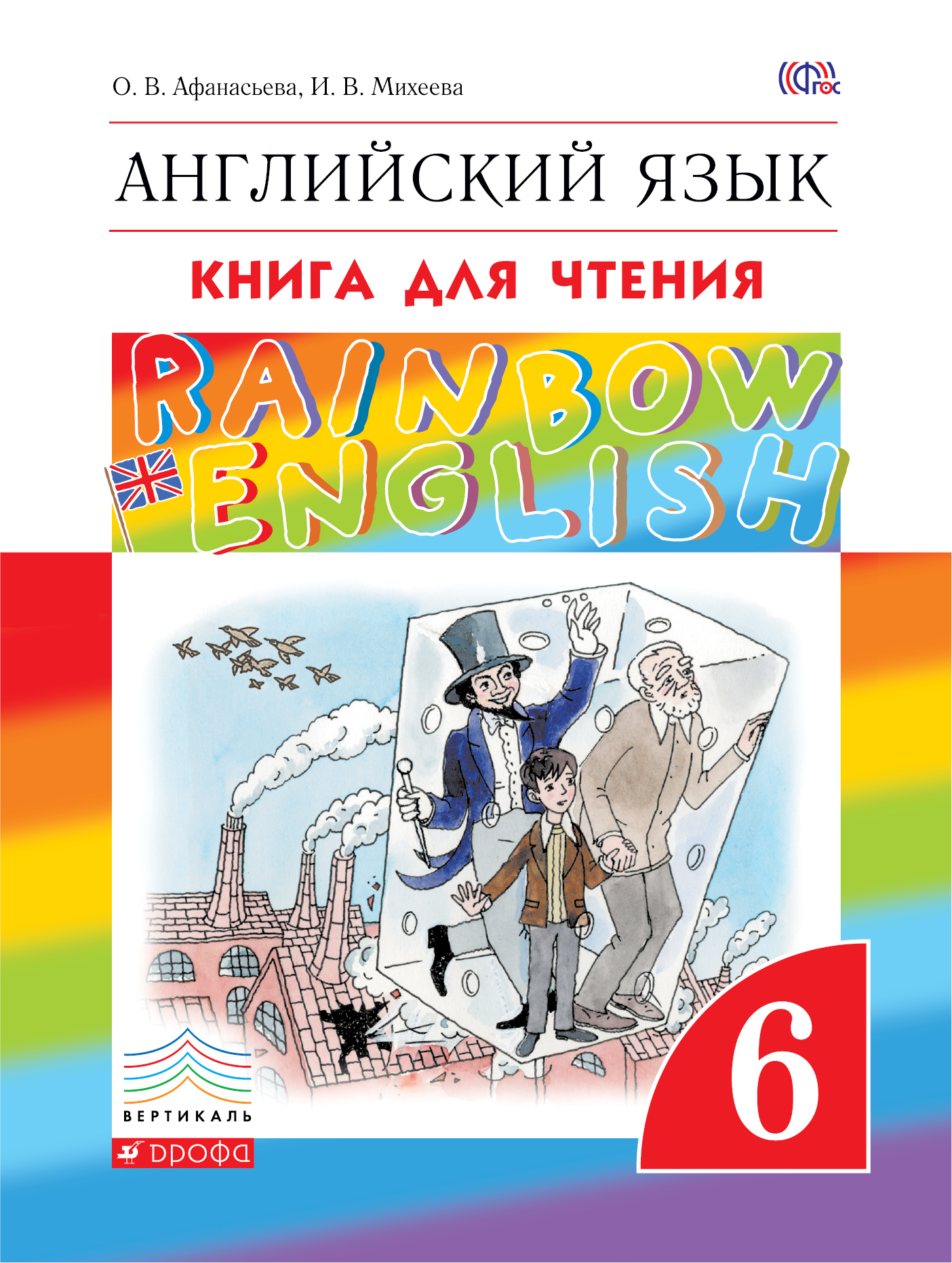 I loved the food. I have worked for a big company. I worked for Nissan, the car company, that’s why I was in Japan. That was two years ago, then I got another job.
I loved the food. I have worked for a big company. I worked for Nissan, the car company, that’s why I was in Japan. That was two years ago, then I got another job.
